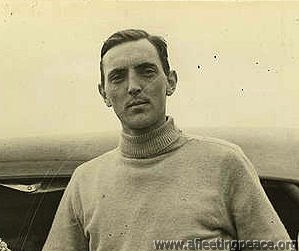| Race No | Pilot(s) |
Plus |
Result | |||||
|
Miles M.2F Hawk Major |
ZK-ADJ | 2 |
|
Mad Mac McGregor | .jpg) |
Johnnie Walker | 5th in Handicap | |
|
Boeing 247D 'Warner Bros. Comet' |
NR257Y | 5 |  |
Roscoe Turner |  |
Clyde Pangborn |
Reeder Nichols (radio operator) |
3rd in Speed Race |
|
Pander S4 'Panderjager' |
PH-OST | 6 |  |
Gerrit Geijsendorpher |  |
Dick Asjes | Retired Allahabad, north-east India | |
|
Desoutter Mk II |
OY-DOD | 7 |  |
Michael Hansen |
Daniel Jensen (flight engineer) |
7th in Handicap Race | ||
|
Airspeed AS.5 Courier |
G-ACJL / VH-UUF | 14 |  |
David Stodart |  |
Kenneth Stodart | 4th in Handicap Race | |
|
Fairey IIIF 'Time and Chance' |
G-AABY / VH-UTT | 15 |  |
Cyril Davies |  |
C N Hill | Disqualified - arrived too late | |
|
D.H.80 Puss Moth 'My Hildegarde' |
VH-UQO / G-AEEB | 16 |  |
Jimmy Melrose | 3rd in Handicap Race | |||
|
D.H. Comet |
G-ACSR / F-ANPY | 19 |  |
Owen Cathcart Jones |  |
Ken Waller | 4th in Speed Race | |
|
Miles M.3 Falcon |
G-ACTM | 31 |  |
Harold Brook |
Miss Ella Lay |
Disqualified - arrived too late | ||
|
Lambert Monocoupe 110 'Baby Ruth' |
NC-501W | 33 |  |
Jack Wright |  |
John Polando | Retired at Calcutta - engine trouble | |
|
D.H Comet 'Grosvenor House' |
G-ACSS / K5084 | 34 |  |
C.W.A. Scott |  |
Tom Campbell Black | 1st in Speed and Handicap Races | |
|
Fairey Fox I |
G-ACXO / J7950, VH-UTR | 35 |  |
Ray Parer |  |
Godfrey Hemsworth | Disqualified - arrived too late | |
|
Lockheed 5C Vega 'Puck' |
G-ABGK / NC372E? G-ABFE VH-UVK A42-1 |
36 |  |
Jimmy Woods |  |
Don Bennett | Retired at Aleppo, Syria - gear trouble | |
|
Douglas DC-2 'Uiver' |
PH-AJU | 44 |  |
Koene Dirk Parmentier |  |
Jan Johannes Moll |
Bouwe Prins (flight engineer) Cornelius v. Brugge (radio operator) Roelof.Dominie P. M. J. Gilissen Thea Rasche |
2nd in Speed and Handicap Rac |
|
Granville R-6H Gee Bee 'QED' |
NX14307 | 46 | 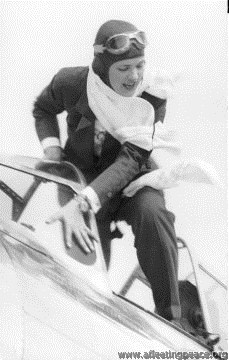 |
Jackie Cochran |  |
Leland Smith | Retired at Bucharest, Romania - flap trouble | |
|
Klemm B.K.1 Eagle |
G-ACVU | 47 | 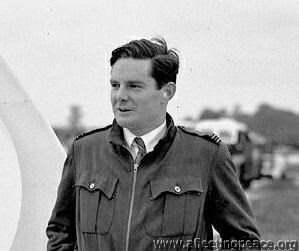 |
Geoffrey Shaw | Retired at Bushire, Persia - gear trouble | |||
|
Airspeed AS8 Viceroy |
G-ACMU | 58 |  |
Neville Stack | 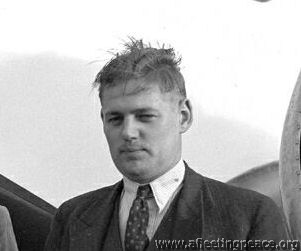 |
Sydney Turner |
Butch McArthur (radio operator) |
Retired at Athens - electrical trouble |
|
D.H. Dragon Rapide 'Tainui' |
ZK-ACO | 60 |  |
James Duff Hewett |  |
Cyril Kay |
F Stewart |
6th in Handicap Race |
|
Fairey Fox I |
G-ACXX / J8424 | 62 |  |
James Baines |  |
Harold Gilman | Crashed Foggia, Italy, killing Baines and Gilman | |
|
D.H. 88 Comet 'Black Magic' |
G-ACSP / CS-AAJ | 63 |  |
Jim Mollison |  |
Amy Mollison | Retired Allahabad, NE India - broken oil line | |
The MacRobertson Race from Mildenhall to Melbourne 1934
The Story of the Race, at a glance:
For two quite separate reasons, the results of the Handicap Race (and therefore the Speed Race) were wrong!

Speed Race
- First Prize - £10,000 and the MacRobertson Trophy (which went to Scott and Campbell Black)
- Second - £1,500 (Turner and Pangborn in the Boeing 247)
- Third - £500 (Cathcart Jones and Waller)
- First Prize - £2,000 (Parmentier and Moll, DC-2)
- Second - £1,000 (Jimmy Melrose, Puss Moth)
1 - They worked out the handicaps wrong
This is really interesting, if you like numbers and stuff:
When they worked out the handicap speeds for the aeroplanes, they got 3 of them wrong.
You see, the formula they used gives a 'handicap speed' based on the four parameters W, A, L and P.
In fact, Handicap Speed =140*(1-(0.2*L)/(W-L))*((P/A)^(1/3)), where
W is the weight of the aeroplane, in pounds;
A is the Wing Area, in sq ft;
L is the Payload, in pounds - each crew member was reckoned to be about 200lb, but some of the aeroplanes carried other passengers and/or freight, and
P is the rated Power of the engine(s) at sea level, in horsepower.
Now, because I don't have the original calculations (they are presumably somewhere in the Royal Aero Club's Archives, if they still exist), I don't know what the figures for the actual weight of each aircraft and its actual payload were on the day. But I do know the figures for P and A, because the figures for the engine h.p. and the wing area are freely available.
So I set up a spreadsheet to try different (but realistic) values of the weight and the payload, to see if I could derive the same result as they did in 1934.
1 - The Desoutter
The Desoutter has a maximum take-off weight of 1900lb, its engine is 120h.p., and it has a wing area of 183 sq. ft. Using a value of 470 lb for the payload (2 people, plus a bit), it has no problem coming in at the 'right' figure of 113 mph:

and neither does 2 - The Puss Moth

... and so on, through 3 - the Klemm

4 - The Miles Falcon:

5 - The Hawk:

and 6 - the Dragon Rapide (although the payload seems a bit high):

(Still with me?)
However, the chart for 7 - the Courier comes out funny:

This means...
There are no possible values for the weight of the aircraft, and the payload it carried, which would give us 140.53 m.p.h. as the Handicap Speed.
What can possibly have happened?
I think the answer is quite simple, actually - if you plug in 270h.p. as the power of the engine, hey presto:

Now, if you remember your Airspeed Courier facts, there were two versions. One (the version the Stodarts intended to fly, and registered for the race) had a 270hp Cheetah engine. The other (the version they actually flew) had a 240hp engine.
... their handicap speed should have been about 135mph, not 140mph.
Better check out the rest of them, I suppose:
8 - the Fox looks OK:

9 - The Comet is OK, too (that's a relief):

and so is 10 - the Fairey IIIF:

and even 11 - The Lambert Monocoupe squeezes in (wing area looks a bit suspect, but...)

but what have we here... 12 - the DC-2 is wrong, as well:

Working back from the result, they must have assumed the DC-2 would have a total of 1750 hp (which it certainly didn't):

... the DC-2 should have had a handicap speed of about 159mph, not 168mph.
Nearly there, thank goodness...
13 - the Vega looks fine:

but poor old 14 - the Airspeed Viceroy was hard done by, too:

They must have assumed it would have 712hp:

Oh well... it didn't finish anyway. :-)
All of which means that...
The Courier, instead of a handicap time of 87:36:59, should have had 91:14:52.
The DC-2 should have had 77:01:34 rather than 73:16:56
The Courier spent 100:24:06 hrs completing the race - 9:09:14 hrs more than its proper handicap time.
The DC-2 only took 83:09:24hrs - 5:52:28 hrs more than its real handicap time.
However, Jimmy Melrose (who got the second prize originally), took 120:16:02, which was 12:34:19 over his handicap time.
So, actually, after all that, if they'd done the arithmetic properly, the Stodarts should have had the runners-up prize, instead of Jimmy (despite what Kenneth said after the race about it being a 'pity to do him out of the second prize'!)
2 - It gets worse - they used the wrong speeds anyway



- First Prize - £10,000 and the MacRobertson Trophy (Scott and Campbell Black)
- Second - £1,500 (Parmentier and Moll, DC-2)
- Third - £500 (Turner and Pangborn, Boeing 247)
- First Prize - £2,000 (David and Kenneth Stodart, Airspeed Courier)
- Second - £1,000 (Jimmy Melrose, Puss Moth)
The Aviators |
|
Dirk "Dick" Lucas Asjes |
||
|
|
Died 2nd February, 1997 in the Hague, aged 85 |
|
|
James Keith Campbell Baines
|
||
|
Born 21st December 1905 in Woodford, Essex. His father, Louis, was a tea and indigo merchant; his elder sister Phillis was born in Calcutta. In 1901 the family lived in Tiverton, Devon; Louis, Lillian, Phillis, Jack, Silsen, Kathleen, and their 3 domestic servants. He was killed, aged 28, during the MacRobertson Race on 23rd October 1934 when he and Gilman crashed in Italy. Joined the N.Z.A.F. in 1925, training at Palmerston North and Wairapa.
He arrived in London from New Zealand on March 26, 1934. He sold his Avro "Avian," just before departure, to a brother-officer in the N.Z.A.F. Reserve, and embarked for England in January, via Australia and South Africa. During the ship's stay in Sydney, Melbourne, Adelaide, Perth and Capetown, Baines kept his hand in with flights on machines hired from the local aero clubs. At the time of the Race, he had flown 3,860 hr. His "Fox" was purchased at Hounslow from Anderson Aircraft and was modified at Hanworth by N.F.S., Ltd., as a replica of the sister-machine entered by Raymond Parer. Its capacity was increased to 175 galls., and its range to about 1,750 miles. "Whilst awaiting delivery of the "Fox," Baines has been making approach landings at Mildenhall. He expresses himself delighted with the new aerodrome, its freedom from obstruction, its perfect run, and its billiard-table surface." ------- In July, 1934, James wrote to the organising committee for the race and asked them to 'change the name of the nominator from myself to Mrs Lilian M Campbell-Baines, my mother, who has made it possible for me to enter the Races'. Baines and Gilman crashed on the 10th of October 1934, and the funeral, at the British Cemetery at Naples, was held on the 26th. The British Air Attache in Rome, Group Captain T Hetherington, undertook all the funeral arrangements; the photographs of the ceremony 'very clearly indicated the profound sympathy of the Italian nation and the honours bestowed on these two officers'. Sadly, James' brother had also been killed earlier in the year in a gun accident; their eldest brother had been killed during WWI also flying, aged only 19. Although they had insured the aeroplane, Baines and Gilman hadn't taken out any life insurance. |
| Donald Clifford Tyndall Bennett CB CBE DSO RAF | |
|
|
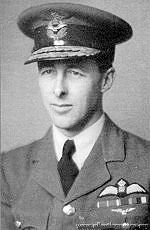 |
|
With Imperial Airways, promoted to Senior Master in October 1938 'Pathfinder' Bennett for his work with Bomber Command during WWII. As you probably know, the Pathfinder Force consisted of people who actually knew how to navigate properly, and marked the targets for the bombers. In May 1945, he became a Liberal M.P.: "Air Vice-Marshal D. C. Bennett, Pathfinder chief and youngest man of his rank in the R.A.F., was returned unopposed to-day as Liberal M.P. for Middlesbrough West." In 1948 he and his wife bought a couple of transport aircraft, formed AirFlight Ltd, and joined the Berlin airlift to fly dehydrated potatoes to the 2 million population. CEO of British South American Airways until forced to resign over an interview he gave in 1948. Opinions varied on what had happened: "SACKED FOR SPEAKING MY MIND-Airway Chief Air Vice-Marshal D. C. T. Bennett has been dismissed from his post as chief executive officer of British South American Airways. The following statement was issued by the British South American Airways Corporation: "The board have terminated the appointment of their chief executive, Air Vice-Marshal D. C. T. Bennett, following differences of opinion on matters of policy. In a statement, Air Vice-Marshal Bennett said:— "Last week, in view of current misinformation on certain affairs of this corporation, I granted an interview to a newspaper correspondent, at which I expressed views concerning the obvious ills of British civil aviation in general and concerning recent interference with management by the Minister of Civil Aviation. It is because of this that I have been forced to discontinue my appointment. I feel I should make it clear that I have been forced to take this course for exercising what I consider to be a right—the freedom of speech." "A personally difficult and naturally aloof man, he earned a great deal of respect from his crews but little affection." He also came 8th in the Monte Carlo Rally of 1953, driving a Jaguar. Wrote his autobiography in 1958, called, of course, 'Pathfinder'. Died 15th September 1986, aged 76 |
|
|
Harold Leslie Brook
|
||
|
b. 11 October 1897, in Bradford Only learnt to fly in 1933, and just scraped up the minimum 100hrs solo flying time required to enter the Race. The aircraft was barely ready in time either; a month before the start it didn't have any seats, and was in "a very unfinished condition". Harold was not impressed by "those fools at Reading [i.e. Miles Aircraft]... this is not the first time they have omitted to do something". In March 1934, he tried to break the England-Australia solo record (held by CWA Scott) but only got as far as the Cevennes before crashing into one of the large mountains they have there. To give him his due, he picked up the important bits of his aeroplane, brought them back and used the engine in this Miles Falcon. In 1935, after taking part in the MacRobertson, he flew back from Australia in record time; you might like to see him talk about his record-breaking flight (on the other hand, you may have some drying paint that needs watching); if so, click Record Flight From Australia - British Pathé (britishpathe.com) Two years later, he added the Cape Town record. Mercifully, there don't appear to be any interviews about this one. Pilot Officer in the Administrative and Special Duties Branch in May 1940, then briefly (28 Oct 1940 - 3 May 1941) in the Air Transport Auxiliary (ATA) And, despite what you may read or hear, was never an accountant in his life (although with his spectacles on, he did rather look like one, and when he talked, he did rather sound like one [sorry]), and he signed himself 'Brook', not 'Brooke'. But 'e were definitely from 'Arrogate.
H. L. BROOK writes to TERRY'S Dear Sirs, I should like to take this opportunity of congratulating you on the excellence of your Springs in my Gipsy 6 Engine. In a record-breaking flight of this description the engine has to be run for long periods in extreme temperatures, and at a higher rate of revolutions than normal, and for a valve spring to break would spell disaster. I had never at any time any fear of this happening with your springs, and they are now at the end of the flight in just as good condition as they were at the start. Yours faithfully, (signed) H. L BROOK. 'Flight' Racing No. 31—H. L. Brook, and —? And speaking of Bradford, here is Harold Leslie Brook, who was born there in 1897, and now resides in Harrogate. He joined the Royal Field Artillery on August 20, 1914, at the age of 16, obtained his commission soon afterwards, and, despite a couple of wounds, served five years in France and India.
Restored to his family, he remained a normal civilian until Yorkshire began to build and fly sailplanes and gliders. These occupations kept him mildly diverted until the approach of his 37th birthday. Then he began to yearn for horse-power. The York County Aviation Club at Sherburn-in-Elmet offered a likely fulfilment of this secret ambition. So, in August, 1933, Brook placed himself in the hands of Instructor Cudemore, and after four hours' instruction became a soloist with serious designs on the MacRobertson Handicap, for which Phillips and Powis have built him the first of their Miles 'Falcons'. What happened between last autumn and this spring is now almost historic. Brook bought the "Puss Moth" (Heart's Content) in which the Mollisons had crossed the Atlantic, and, with a total of 43 hr. in his logbook, pushed off solo from Lympne to survey the route to Melbourne. That was on March 28, 1934, at 5.20 a.m. By noon the incident had closed. Describing it a few days later Brook said that, while flying through very dirty weather over France, he was forced down from 12,000 ft. by ice formation on the wings, and, before he knew how or why, the side of an unsuspected mountain was rushing up at him out of the murk. Guided by some uncanny sixth sense, he brought off a bloodless landing on the mountain proper. The scene of this epic of the air was Genolhac, in the Cevennes. With some local help he salvaged the "Gipsy Major," brought it back to England, and has had it installed in Heart's Content II. Brook's next attempt on the Australian record will not be solo. If expectations are realised, he will be accompanied by two lady passengers. 'Flight' Another England-Australia attempt MR. H. L. BROOKE, a member of the York County Aviation Club, left Lympne at dawn on the morning of Wednesday, March 28, on an attempt to break the record for the England-Australia trip held by Sir Charles Kingsford-Smith with the time of 7 days 3 hours. Mr.Brooke was flying the " Puss Moth " (" Gipsy III ") Heart's Content, in which Mr. J. A. Mollison made an Atlantic crossing. A few hours after leaving Lympne, while flying through fog, he crashed in deep snow near Genholac, in the Cevennes. The machine was completely wrecked, but Mr. Brooke escaped with nothing worse than some bad bruises. For five hours he wandered about inthe mountains, and eventually found a small village, where he was given every attention. Later he returned to the wreck of his machine, and removed the instruments and other articles of value. 'Flight' April 4, 1935 YORK COUNTY AVIATION CLUB, SHADWELL, LEEDS During March the York County Aviation Club, Ltd., flew 63 hours at Sherburn-in-Elmet, and Miss Maurice and Mr.Pilkington made first solos. Two machines flew to Nottingham for the club dance, and Mr. Humble, the honorary instructor, has presented the club with a fire tender—a very apposite gift! The next dance will be held on April 13. Mr. H. L Brook, who has just broken the Australia-England record with a Miles " Falcon," was trained at Sherburn—which appears to be a pretty good advertisement for the instruction. 'Flight' These days, the home of Sherburn Aero Club: http://www.sherburn-aero-club.org.uk/ SWIFTLY from AUSTRALIA How H. L. Brook, in a " Gipsy "-engined Miles "Falcon" broke the Solo Record : His Story in an Interview with " Flight "LAST Sunday afternoon, at 3.55 p.m., the original Miles" Falcon " landed at Lympne, having flown in 7 days•* 19 hr. 50 min. from Darwin, North Australia, withMr. H. L. Brook, of Harrogate, at the controls. The •pilot thus beat the unofficial " s o l o " record of Mr. C. J.Melrose by 13 hr. 10 min., and the officially recognisedperformance of Mr. J. A. Mollison by 1 day 2 hr. 25 min.The shortest time for the Australia-England trip is still,of course, the 6 days 16 hr. 10 min. of Cathcart Jones andWaller in a " C o m e t ."After leaving Darwin at 5.30 a.m. on Sunday, March 24(Australian time), Mr. Brook's time-table was as follows:—Sunday night, arrived Rambang ; Monday, Penang; Tuesday,Rangoon; Wednesday, Calcutta; Thursday, Karachi; Friday,Athens; Saturday, Rome; Sunday, Marseilles (9.25 a.m.) ;Lympne (3.55 p.m.).the Timor crossing, he told a member of the staff of Flight,was " r o t t e n , " with rain, low clouds and heavy head winds.On the trip from Penang he landed on the delta near Calcutta.Over the Sundarbans low clouds and darkness caused him totake this measure rather than to fly on, possibly missingCalcutta, and, as he put it, perhaps making a crash landingthrough shortage of petrol.Perhaps the worst section of the trip was that betweenAthens and Rome, particularly the portion over the channelof Corfu, where a gale was encountered. At Brindisi Mr.Brook was advised not to proceed, but he pushed on andcrossed the Apennines in a snowstorm.And what of the man himself? He is a thirty-eight-yearoldYorkshireman, who, despite the newspaper stories, hasnever been an accountant in his life. When he was youngerhe indulged in motor racing and later built a few sailplanesand gliders. Then he joined the York County Aviation Cluband went solo after four hours' instruction. He next boughtMr. J. A. Mollison's "Puss Moth" Heart's Content, and setout for Australia to survey the route to Melbourne, for he haddecided to enter the MacRobertson Handicap. But ice formationforced the " Puss Moth " down on a mountain side inthe Cevennes. Neither Brook nor the "Major" (which, itshould be remembered, had already been flown over the SouthAtlantic) was rendered hors de combat, however. The enginewas salvaged and Brook brought it back to England, where itwas installed in the first of the Miles " Falcons" which thenwas fitted with extra tanks for the race. During the event itcarried a lady passenger and a large helping of appalling
luck (no connection is suggested between the two facts!).Suffice it to say that the Australian trip, a large portion ofwhich was made in easy stages, took about twenty-six daysDuring his stay "down under," Brook worked until the" F a l c o n " and its engine were in tip-top condition beforestarting his almost unheralded flight.Of travelling in the "Falcon " he says that, compared withflying in an ordinary aeroplane with open cockpits, it was" like travelling in a saloon car instead of on a motor cycle. The veteran "Gipsy Major" was run throughout the flight at 2,100 r.p.m. HILLSON PRAGA Imported specimen 107 Praga E.114 OK-PGC. Regd G-ADXL (CofR 6479) 27.11.35 to F Hills & Son Ltd; dd Speke to Barton 30.12.35. CofV 91 issued wef 27.2.36. Dd 20.4.36 to Harold Leslie Brook; flown by him to South Africa, departing England 6.5.36; arriving Cape Town 22.5.36. Regn cld 6.36 as sold. Regd ZS-AHL 6.36 to OG Davies, Cape Town. Sold 8.37 to H Cooper, Cape Town. Converted to glider at Youngsfield 9.53.
30th Aug. 1940. ADMINISTRATIVE AND SPECIAL DUTIES BRANCH. Harold Leslie BROOKE, D.C.M. (84353). |
|
Lt Owen Cathcart Jones
|
||||||||||||||||||||||||||||||||||||||||||||||||||
Born 5th June, 1900, London (definitely not Canadian, despite some nasty rumours).
|
||||||||||||||||||||||||||||||||||||||||||||||||||
|
Jackie Cochran
|
||
|
"Jacqueline Cochran's earliest memories are of life with a foster family on what she called "Sawdust Road," but what was, in fact, a lumber mill town in northern Florida. In her autobiography she remembered having no shoes until she was eight years old, sleeping on a pallet on the floor and wearing dresses made of cast-off flour sacks. As a child she was hired by a beauty shop owner, and by the time she was 13, she was cutting hair professionally. In the 1920s she became one of the first women to master the newly invented permanent wave. But one of the customers, noting Cochran's spark, encouraged her to do something more serious with her life. With very little formal education, Cochran enrolled in nursing school. Even though Cochran completed three years of training to be a nurse, she never quite adjusted to the profession. In her autobiography, she remembers not ever getting "comfortable with the sight of blood." She constantly had to resist the urge to hand in her notice, reminding herself that a nurse was more valuable than a beautician. But she was never convinced, and an experience delivering a baby to an impoverished mother in Florida helped drive her back to the beauty trade. She remembered three children were sleeping on pallets next to the woman giving birth. "There I was with neither the strength nor the money to do the smallest fraction of what needed to be done to make those lives better... . In a beauty shop the customers always came in looking for a lift. And unless I really screwed up," she concluded, "they left with that lift." Her next job as a beautician at Antoine's in New York's Saks Fifth Avenue brought Cochran into her future husband's world. At a dinner in 1932, the dashing millionaire financier Floyd Bostwick Odlum advised Cochran that if she were ever to realize her dream of setting up her own cosmetics firm, she'd need wings to cover enough territory to beat her competition. Cochran took the advice to heart, and that summer she learned to fly. "At that moment, when I paid for my first lesson," Cochran remembered later, "a beauty operator ceased to exist and an aviator was born." Macrobertson Air Race in 1934 Excerpt from: "JACKIE COCHRAN, An Autobiography" by Jacqueline Cochran & Maryann Bucknum Brinley "Gee Bee stands for Granville Brothers, a Springfield, Massachusetts, airplane company which made fast, unstable, dangerous planes in the thirties. The nearly cute nickname is a sham. They were killers. There were few pilots who flew Gee Bees and then lived to talk about it. Jimmy Doolittle was one. I was another. I tell you all this as a prelude to my story about the London-to-Australia race. I flew a Gee Bee, the QED Gee Bee, but a Gee Bee nonetheless. The QED was Latin for "Quod Erat Demonstrandum" and came from the designers who translated that as "Quite Easily Done." It was not easily done, however. The crazy QED violated basic rules of aerodynamics. Clyde Pangborn had entered his name in the race, hoping to find himself in a Gee Bee but, because of problems at the factory as well as an offer from Roscoe Turner, who had never flown over oceans before and knew that Clyde had, the QED was still sitting in the hangar, almost ready to go. Clyde had joined Roscoe's team but was still the registered owner of an entry. He had the official right to name an alternate crew, and I knew it. Sitting in New York, after my conversation with Royal, searching for a way to stay in the race, I remembered Clyde's QED and made all the right calls. Granville Brothers knew me because I myself had approached them earlier in the game but had changed my mind when I compared it with the chance to be in a Northrop. Jack's planes were so streamlined and beautifully fast for their day. But any plane was better than no plane. I bought the Gee Bee with a little help from my friend Mabel Willebrandt. Granville Brothers were pleased because they were anxious to make a name for themselves in such a prestigious international contest. They even offered to send mechanics along to complete the plane en route to London on the ship. In the meantime, I had Wesley Smith and Royal Leonard take some of the sophisticated equipment out of the Northrop Gamma so we could install it in our Gee Bee. We had four hours to make the official arrangements with the London officials. I needed what was called an airworthiness certificate, numerous permissions to fly over all those countries, not in a Gamma but a Gee Bee, and Mabel turned on the steam. Mable even convinced a Department of Commerce official to go along on the boat to do the necessary testing. Landing lights, flares, radio equipment - we planned to install as much as we could as we crossed the Atlantic, in spite of storms and seasickness. Not much would get done as it turned out. All this was done by telephone. I never set eyes on that Gee Bee until I arrived at the airport near Southampton, England, and tried to fly it to the field where the race would commence, twenty-four hours later. It was a disaster and still incomplete. The other disastrous aspect was the tremendous publicity surrounding the contestants. I had never experienced anything like it. I never sought publicity like that in my life because mostly it's a waste of your time. And I didn't like the scene there in London one bit. The press kept rumoring about the mysterious American woman entry, but there was nothing mysterious about my whereabouts or doings. I had a tricky, incomplete plane to contend with. In the meantime, Clyde Pangborn was giving me trouble and demanding that I pay him for the transfer of his entry. After all the anguish that Gee Bee had caused me - at that point I had no idea my troubles were just beginning - he had some nerve asking for money. I was furious. And I told him so. If I had been a man, we would have gone out behind the hangar to fight it out.... The starting point the next morning was a nearly-completed Royal Air Force base at Mildenhall, sixty miles north of London. The lord mayor of London was there promptly at 6:30 am to drop the official white flags. Planes took off at 45-second intervals, and the famous team of Mollisons - Amy was a wonderful pilot and flew with her husband - were first. Wesley and I were fourth in line and had been warming up the engine, but as soon as we were airborne, the plane sort of staggered, dipped slightly, and I knew we were in for a real ride. Neither of us knew that Gee Bee well enough. We recovered speed, however, and we were serious about sticking with it. The haze was horrible and I was happy Wesley had been such a nag about my instrument training and Morse code lessons. This race, however, was actually the first and last time I relied on Morse code. After all the hullabaloo in America about this contest, only three American-crewed entries remained: Roscoe Turner, the United States speed king at the time; Jack Wright, a stunt pilot from Utica, New York; and me. When you compared the elaborate preparations I had made for the flight - sending specialists ahead on the route with automatic refueling devices, flares, spare parts, personal items, extra instruments - as well as the whole debacle with my Northrop Gamma - to Jack Wright's simplistic attitude, I really wondered. All Jack wanted to do en route was to "fly this plane while it's still mine". It was a tiny Lambert Monocoupe with a single 90 horsepower that hummed along. Who had more sense: him or me? I had even sent clothes along to Melbourne so I'd have something to wear to the festivities. But I wasn't alone with my big thinking. Roscoe Turner had gone into hock to buy a Boeing transport plane he called the "Nip and Tuck". Then because of rough weather he hadn't been able to get it off the ship at Plymouth. They had to take it over to France, to Le Havre, where the French tried to make him pay import duty of $20,000. He got around that but had to unload the plane, assemble it, and fly it back to England in time. That was funny about all of our best-laid plans was that the Europeans had been sullen and some of them openly angry about what they believed to be a Yankee conspiracy to walk away with all the prize money. Little did they realize. My Gee Bee was the fastest plane in the race, I believe, but right from the start I realized that it wouldn't be speed that would win. Jackie and her co-pilot Wesley Smith were forced down by engine trouble in Rumania. In 1953 she became the first woman to break the sound barrier in a F-86 Sabre jet fighter, earning the title 'America's Fastest Lady'. d. 9th August 1980 in Indio, California, aged 74
|
|
F/O Cyril G Davies
|
|
Partnered Lt-Cmdr E M Hill in the MacRobertson Race AHSA_1985_AH_Vol_24_No_1-2 says: "The pair who had flown together in the Fleet Air Arm became known as “Burglar Bill and the Missionary”. Davies earned the title of the “missionary” no doubt because since leaving the R.A.F. some time previously he had been running a shelter for destitutes in the West End of London. |
| Gerrit Johannis Geijsendorpher | ||
|
|
||
|
Like Koene Dirk Parmentier, Gerrit also died in an accident in KLM service. On 26 January 1947 his Douglas DC-3 crashed shortly after takeoff from Kastrup Copenhagen Airport in Denmark, killing all 22 on board. Among the victims were the Swedish prince Gustav Adolph and the American singer Grace Moore. |
||
| Harold Darwin Gilman | ||
|
|
|
|
|
Died on 23rd October 1934 in Italy (crashed during the MacRobertson Race), aged 28 "Flt. Lt. Gilman took his "A" in 1926 with the Auckland Aero Club. Shortly afterwards he joined the N.Z. Staff Corps and was sent to Aldershot in 1928 on attachment to the Suffolk Regiment. In 1929 he was transferred to the R.A.F. "Refreshed" at No. 2 F.T.S. (Digby), he was posted to No. 101 (Bomber) Sqd. at Andover, under Wing Com. F. H. Coleman, whose adjutant he remained until 1933. Gilman took part in all squadron experiments, including the high-precision bombing of H.M.S. Centurion. Last year, on conclusion of the annual Combined Exercises, he was sent as assistant adjutant to No. 600 (City of London) Sqd. under the late Sqd. Leader S. B. Collett. Finally, after brief attachment to the C.F.S. (Wittering), he was posted to the newly formed No. 15 (Bomber) Sqd. at Abingdon, of which he commands "B" Flight. His log-books show 1,560 hr. Gilman has been granted special leave to accompany Baines in the race to Australia." |
||
| Michael Hansen | ||
|
|
|
|
|
Trained as a pilot in the Danish Army Air Force in 1927. Just before the MacRobertson Race, had competed in an aerobatic championship in Paris. He flew with mechanic Daniel Jensen, who crouched under the main petrol tank which was fitted instead of the passenger seat. The Desoutter was already over 3 years old by 1934. ---------------- BRITISH AEROPLANES FOR DENMARK Eight De Havilland Machines for Danish Air Force WITHIN the next few days a fleet of eight de Havilland aeroplanes will leave Harfield aerodrome to fly to Copenhagen in charge of officers of the Danish Air Force. The flight will be under the command of Capt. C. C. Larsen, who will pilot the "odd" machine of the flight, a de Havilland "Dragon." The other seven machines are "Tiger Moths." The seven " Tiger Moths " will be used for the instruction of Danish pilots in the art of military air manoeuvres, and the equipment of the machines includes all the instruments necessary for "blind flying." Instrument flying is a relatively recent development of military flying training, and Great Britain has, perhaps, done more than any other nation to perfect the equipment. Following the adoption of instrument flying by the British Royal Air Force, nearly all other nations are adding it to their curricula. The "Dragon" bought by the Danish Air Force is equipped for military purposes, and will also be used for light transport and for aerial survey. All the machines of the batch are fitted with de Havilland "Gipsy Major" engines. WAITING TO GO : Seven "Tiger Moths" and one "Dragon" at Hatfield, ready to start for Copenhagen. The Danish crews include Capt. C. C. Larsen, Lts. Clausen, Meincke and Rydman, Sgts. Eriksen, Petersen and Hansen, and Machine Officer Petersen. (FLIGHT Photo.)
The Hop to Darwin (by Lord Sempill) 1 WAS just preparing to make a start for Darwin when a D.H. " Moth," which had been very kindly sent over by the Vacuum Oil Co., landed to see if I was all right. Apparently the signal sent from Koepang, although it had reached them, had not Been very clear as to my intention to stop the night at Bathurst Island. They brought my mail which, of course, was mostly from Australia, and contained numerous hospitable invitations. Taking off on the short sea crossing, I arrived at Darwin and received a very kind welcome. The aerodrome has a level grass surface, but is, I understood, liable to become boggy after rain. It is 680 yards from north to south and 1,000 yards from east to west. There is a well-equipped meteorological office and a new shed was just being built. The Danish pilot, Lieut. Hansen, who had put up such a good performance in the MacRobertson race in an old Desoutter, was here on his return journey. He was hurrying home as he had only been given leave from his military duties until December 10. He had done some hard flying on the outward trip, putting in, on some sections of the route, sixteen hours a day. MARCH 7, 1935 - 'Flight'
A British Entry for International Aerobatic Contest ? ORGANISED by the newspapers Le Petit Parisien and Air Propagande, an international aerobatic competition, named " Coupe Mondiale d'Acrobatie Ae'rienne," will be held at Vincennes, near Paris, on June 9 and 10. The prizes amount to 300,000 francs, of which 100,000 will be awarded to the winner, 75,000 to the second and 50,000 to the third. It is reported that the following entries have been received:— Detroyat (France), Al Williams (U.S.A.), Fieseler (Germany), Colombo (Italy), Staniland (Great Britain), Orlinsky (Poland), Hansen (Denmark) and Van Damruch (Belgium). Judging from what we have seen of Staniland's masterly handling of the " Firefly," he should have little to fear from the aerobatic " aces " of other nations. FLIGHT, FEBRUARY 15, 1934 The Danish Air Society (Det Danske Luftfartselskab) bought the second last manufactured Desoutter Mk.II in 1931. This aircraft was given the registration OY-DOD. In 1934, this aircraft was sold to lieutenant Michael Hansen, and in the following year to the Nordisk Luftrafik company. In 1938 it was sold to Nordjysk Aero Service, but Michael Hansen bought the aircraft back the same year and used it to fly to Cape Town and in the MacRobertson Air Race Michael Hansen, 14.1.1903-23.3.1987, Danish pilot. Michael Hansen was trained as a pilot in the Army Air Force troops in 1927. Han achieved a seventh place (out of 20 runners aircraft) with a single-engine FK Desoutter højvinget monoplane in October 1934, together with maskinofficiant Daniel Jensen in the famous air racing Mildenhall (England) - Melbourne (Australia) in competition with some of the world's most talented pilots and fastest planes. It was a trip of no less than 19.895 km. In 1937 flew he and engineer Aage Rasmussen to Cape Town and return with the same aircraft. The following year he participated in a Danish military søfly (De Havilland DH82A Tiger Moth) as islods on Eigil Knuth Dark Northern Expedition to Northeast Greenland. These flights he described in the books "43.000 km through the air" (1935) and "On the Danish wings in South and North "(1941). He was in a number of years president of The Adventure Club and ended his military career in 1963 as a lieutenant colonel in the Air Force. He is buried in Hørsholm Cemetery. Literature: Michael Hansen: 43.000 km through the air (1935) and the Danish wings in South and North (1941), Ove Hermansen: Since Hansen flew to Melbourne in '34 - 75 years for Danish participation in the world's largest flykapløb from England to Australia (2009). |
||
| Godfrey Ellard Hemsworth | ||||||||||
|
|
|
|||||||||
|
Seen here on the left, in 1940 Godfrey's signature: Godfrey (‘Goff’) Hemsworth and ‘battling’ Ray Parer piloted a second-hand Fairey Fox biplane, G-ACXO, in the 1934 England to Australia Air Race. Although they almost immediately had engine trouble (over the English Channel, in fact) and didn’t complete the course in the time allowed to qualify for any of the prizes, they battled on... and on; eventually, they took 117 days to get to Melbourne. But they got there!
After the race, Godfrey joined the RAAF and was killed in the Battle of the Coral Sea, flying a Catalina. "'Goff' had all the guts in the world." They say. [family insights were kindly provided by G E Hemsworth, Godfrey's nephew].
Family Godfrey was born in Sydney, Australia on the 2nd of January, 1910. He had three brothers - John, Neville and Hugh - and two sisters, Alice and Anne. His grandfather (John) had owned and captained a number of vessels (including the Neville & Costa Rica Packet), but during the 1890’s depression most of the fortune had been lost. His father, Captain Hemsworth – also (confusingly for us) called Godfrey Ellard – had been instrumental in the exploration of New Guinea during the latter part of the previous century; in 1885, the Maitland Mercury & Hunter River General Advertiser reported that: “Godfrey Hemsworth, age 23, of Brisbane, filled the post of nautical sub-leader, and in the event of the death, or serious illness, of the leader he would take his position, except that he would not lead the party on land. He held a master's Certificate, and had been navigating officer of some of the finest steamers, was a member of the Meteorological Society of London, and was qualified to undertake any kind of marine surveying.” Theodore F Bevan, of the RGSA, wrote about that expedition and the subsequent gold rush in his book ‘Toil, travel and discovery in British New Guinea’. However, by 1906 Captain Hemsworth was listed as a 'pearler' in the electoral roll for Broome, Coolgardie, living in Weld Street. (A ‘pearler’ (leaving aside its use as an Australian slang word meaning ‘excellent’ or ‘good-looking’!) is someone that ‘dives for, or trades in, pearls’). There was obviously enough money for him to purchase some pearling luggers (in the end he owned 12 including the Blanche –named after his niece - and some others named after his sisters). He left Broome in 1908 and returned to Sydney. It was while he was in Western Australia that he met Mabel; they married in Feb 1907. She was 'about 30 years younger than her husband' (who would have been about 45 at the time!) Godfrey's nephew G E Hemsworth told me "Interestingly, I have a journal that a great aunt wrote about her life and that of her parents and siblings. It traces their lives from 1825 to the 1930’s, but not once does she mention Mabel, so obviously the family were not happy!" Captain Hemsworth died in 1923. His estate amounted to about £12,000, which he left ‘for the benefit of his widow and six children’. Using average earnings, this would be worth over £2 million today. Before the Race Godfrey took his A and B pilots’ licences with the local branch of the Australian Aero Club in 1931, and then flew for Parer's New Guinea company. Not without incident, however: “Mr- Mario Coucoulis, secretary to the Greek Consul-General in Sydney, left Mascot aerodrome on Saturday on a flight to Perth. His idea is to gain experience for a projected flight to Greece later in the year. Mr. Coucoulis and Pilot G. E. Hemsworth, who were flying from Sydney to Perth, made a forced landing near Wagga on Monday. The plane was damaged, but neither occupant was hurt. They intend to proceed when repairs are effected.” The Queenslander, Thursday 23 July 1931 During the 1930s,when Papua New Guinea was governed by Australia, a quite extraordinary air-based operation was mounted in Bulolo to support the gold mining industry– so much so that New Guinea ‘led the world in commercial aviation’ at the time.
Bulolo during the gold rush days In 1933 Godfrey and his brother John were living at Wychwood, Condamin Street, Balgowlah, New South Wales (although both were listed as having ‘No Occupation’). Their mother, Mabel, lived nearby in White Street. Parer and Hemsworth arrived in England from New Guinea on August 6, 1934, breaking the journey at Singapore. The Fairey Fox in which they competed in the Air Race was bought from the Hon. Mrs. Victor Bruce, and was modified at Hanworth by W. S. Shackleton, who ‘cleaned it up very prettily’. After the Race In September 1936, there is a curious entry in the Sydney Morning Herald: “AMBITION TO FLY: Youth Granted Fees from Estate Application was made in Equity yesterday by Neville Hemsworth, a son of the late Captain Godfrey Hemsworth, retired master mariner, formerly of Campbelltown, for an order for the payment of fees from his father's estate for the purpose of applicant's training as an aviator. The application was made through the applicant's mother, the testator's widow, a resident of Manly. She said that her son Neville had just left school. He was aged 19, and wished to qualify as an aviator to obtain a pilot's "A" licence, and "B" commercial licence, and wireless and navigation licences. One of his brothers, Godfrey, was a pilot for New Guinea Airways at a salary of £900 a year. Mr. Justice Nicholas made an order authorising the trustee to pay out of corpus £475 to meet the fees necessary for the purpose indicated, and in addition, £25 for books, instruments, etc.” "... It’s an interesting story. My grandfather’s will gave the boys their money at 25, the girls were to receive a monthly payment. As Neville wanted to learn to fly he had to have access to the funds earlier and Mabel successfully argued that sufficient funds should be released to enable Neville to obtain his pilots license. When Godfrey died in 1923, the oldest child (John) was 15 and the youngest Hugh only a few months old. Mabel had many fine qualities and was certainly a loving mother however she was not good with money and of course six years later in 1929 the start of another depression and a second fortune lost. This indicates how important it was for Neville to obtain a good job and learning to fly would help achieve that." …although Godfrey's working for ‘New Guinea Airways’ may not have been as glamorous as it sounds…
RAAF Godfrey was a First Officer with Qantas from May 1938 until the outbreak of war fifteen months later. On his application form for the RAAF, he listed his ‘service aircraft’ experience as ‘Seagull Mk 1, Empire Boats, and Catalina’. By then, he had 5,500 hours experience – 4,500 as pilot in charge. The Australian government requisitioned two `C` class flying boats and their crews from Qantas, and two Seagull Mk5 amphibians, to form 11 Squadron RAAF. The boats were converted for war use in 5 days and on 25 September left for active service operations in the north of Australia; Godfrey, who had been accepted as a Pilot Officer a month before, was one of the pilots. During the next couple of years, he was promoted to Flying Officer, then Flight Lieutenant and finally Squadron Leader in 20 Squadron, based at Port Moresby, in April 1942. His RAAF report, written in 1941, describes him as ‘of temperate habits’ and praised his ‘zeal and energy in performance of duties’, but he only scored average marks for his ‘personality, force of character and leadership’. G.W Pearce, the examiner, concluded he was: “A keen and efficient officer. A good pilot and carries out his flying operations in a competent manner. Lacks the right service outlook. Is inclined to be argumentative with his seniors and has the ‘Qantas’ outlook in that he will not take the slightest risk in flying in case it will jeopardize his position with Qantas Airways after the war. He, however, commands the respect of his crew, and he is well liked by the officers”. 20 Squadron RAAF had an extraordinary history, which is perhaps best appreciated by reading this article reproduced in several newspapers of the time. It was written in April 1943, a year after Godfrey was killed: "But I think those RAAF Catalina squadrons have done a greater job in this war than anyone else". This tribute from a fighter pilot of famous Squadron 75 is probably the best way in which to begin this story. Before Squadron 75 fought off Japanese bombers and Zeros over Moresby, and attacked them at Lae in March and April last year, the Catalina boys had bombed them hard at Rabaul. Catalinas were few in number then, but they struck so daringly that the Japs must have believed our Moresby strength was greater and more varied than it was. At any rate, they paused in their southward rush and whenever they came over Moresby in those January days, they flew high and cautiously. Today Australia's Catalina flying boat squadrons have won world-wide fame. In craft built specially for reconnaissance they have become a formidable striking unit. They have harassed the Jap from Truk to Tulagi. They have flown more than 2,000,000 miles in all weather over the Coral Sea and the Pacific to blow up in the dead of night his ammunition dumps and stores, destroy his grounded aircraft, tear gaping holes in his airstrips, sink his ships, plot his movements. One lone Catalina actually tried to stop the Japanese task squadron in its descent upon Rabaul. Flt-Lt "Bob" Thompson, on patrol on January 21, spotted the convoy. He signaled that he would attack if it didn't hold back. The Japs continued full steam ahead. Thompson attacked. The Japs shot him down. The crew are believed prisoners in Japan. That was the Catalinas' first loss in battle. Thompson's impudent daring is the key to the cool courage that has characterized the work of the squadrons ever since. Sometimes they have made newspaper headlines. But mostly they have plodded ahead quietly and doggedly. Theirs is not the swift dramatic flash of the fighter plane, told in short dynamic sentences. Theirs is the hard 18 to 22-hour mission to pin-pointed targets, their reward high flames, explosions, and billowing smoke. But you can get drama only secondhand from the Catalina boys. They will tell you stories about others, never about themselves. When I was there, the Cats had just returned from their big "bash" at Ballale in the Solomons Buin-Faisi area. As at other places, they had destroyed ammunition and fuel dumps, stores, and grounded planes, and young Sq-Ldr Stokes was credited with "the biggest fire since Makambo." Today in the mess they sing to the tune of 'The Man on the Flying Trapeze": 'They head her for home and the skipper retires To dream of the headlines next day the "the fires Were visible 90 miles distant" - the liars. The Cat boats are flying tonight.' That's the other side of the Catalina boys. Light hearted over their parodies in the mess - deadly serious in their job. Pioneer Pilots Beginnings of the Catalina squadrons go back to Empire Fying boat days. With German raiders in the Pacific, reconnaissance on a much wider scale was essential. While orders for Catalinas were placed in America, Qantas flying boats were taken over by the Commonwealth. The names of Sims, Gurney, Purton, and Hemsworth, all Qantas pilots, began to dot the islands of New Guinea and the Solomons. They plotted fuel 'hide-outs" and secret operational bases. Sims is back with Qantas now. Gurney was killed in an American bomber returning from Rabaul (a New Guinea airstrip bears his name); Purton is missing from early Japanese operations in the north-west; Hemsworth was shot down in the Coral Sea battle. Al Norman, second-pilot with Gurney on the first Catalinas, also went in the Coral Sea. Godfrey Hemsworth's is one of the first names you hear when you visit the Catalinas. It is an indication of a good pilot and a strong character. He could have come home another way from his shadowing of the Japanese Coral Sea invasion fleet, instead, he chose to make an even more thorough job of his search. Enemy floatplanes got him. They tell this story of Hemsworth in the mess: "He was on a night raid to Rabaul. That was early in the 'piece.' Second 'dick' was Bill Miller, DFM. They were attacked by five Zeros just as they were making their run. Their port engine was disabled and the old crate was holed in 157 places, including the petrol tank. One Zero was shot down. "It was a tough spot, but with guns blazing, 'Goff' got away on one engine. They were forced down at Salamaua to get petrol. 'Goff' got her off again, still on one motor, and reached Moresby all out. Flying time home was 15 hours." " 'Goff' had all the 'guts' in the world." they say. POSTSCRIPT In theCoral Sea and Catalina Memorial Museum, Bowen, Queensland, Australia, there is a diorama showing two PBY-5 Catalinas: A24-18, which was shot down on 4th May 1942, with a loss of nine aircrew, was piloted by Godfrey Hemsworth, whose brother Neville, also a WW2 RAAF veteran, dedicated the Museum on 8th May, 1992. The other aircraft is A24-20 shot down on 6th May. Both these aircraft were shadowing the approaching Japanese Fleet. A24-18 is credited with first locating the Fleet, and was subsequently ordered to identify and report back the size and content of the fleet. The plane did so and was not heard from again. As to what happened then, 'there is no certain answer. We [the family] know he was shot down and that he and his crew were picked up; after that it becomes conjecture but there seem to be three theories: Hugh told me that Godfrey was killed on board the ship which picked him up but there is no actual proof, no records as to what actually happened.' His mother Mabel received his Air Force Cross from His Excellency the Governor-General, Lord Gowrie, at Admiralty House on the 25th of January 1943. She herself died later the same year, from leukemia, in Manly. Godfrey's nephew G E Hemsworth told me that "Anne's husband Andrew was a prisoner of the Japanese, he was taken at Singapore. Godfrey's brothers all served in the RAAF: John was too old to fly, but served in the Middle East for three and half years in ciphers and equipment, moving along the coast and setting up airfields and ensuring the plans and men had the equipment with which to fight. He used to take lots of photo’s including German POW’s and Montgomery standing in a jeep etc. Hugh, the youngest, was a pathfinder and flew many missions over Germany. He won a DFC & Bar."
There is a memorial to Godfrey in the Port Moresby War Cemetery, Papua New Guinea (Memorial No 23791928).
No. 20 Squadron was established at Port Moresby on 1 August 1941 for a general reconnaissance role. The Squadron conducted long range patrols in conjunction with No. 11 Squadron until the outbreak of war in the Pacific. It then commenced anti-submarine patrols and bombing raids against Japanese bases. As the Japanese advanced into the South West Pacific the Squadron was also responsible for evacuating white civilians from areas threatened by invasion. While the Squadron moved to Bowen, Queensland in May 1942 in response to the increasing frequency of Japanese raids on Port Moresby it continued to conduct reconnaissance, anti-submarine and occasional bombing operations over the waters around New Guinea. http://en.wikipedia.org/wiki/No._20_Squadron_RAAF The serial numbers may be wrong:
Godfrey was posted to No 11 Squadron 25/9/39 then to 20 Squadron 1/8/41 |
||||||||||
| James Duff Hewett | ||
|
|
|
|
| James Duff Hewett was born on January 18, 1891, in a near-Auckland district which is spelt Kihikihi and pronounced " Kee-kee " to avoid confusion with kai kai. which is Maori for "food." The R.Ae.C. gave him its certificate in June, 1916, two months after his transfer into the R.F.C. Whilst serving in France with Nos. 4 and 23 Squadrons he was awarded the C. de G. Post-war he put in a year with No. 20 Squadron on the Indian North-West Frontier. Thence, with rank of Sqd. Ldr., back to New Zealand. One of Hewett's brother officers in No. 23 was " 2nd Lieut. C. K. Smith," nowadays better known as Air Com. Sir Charles Kingsford Smith. In 1924 Hewett joined the N.Z.A.F., of which he is still a member. Since 1927, when he bought one of the first Moths " seen in the Dominion (a " Gipsy I "), his connection with aviation has been mainly commercial, as managing director of Falcon Airways, Ltd., Auckland, which has its private aerodrome at Oraki. Hewett has flown some 4,000 hr. Now in his 44th year, he is perhaps senior to every competitor in the race. HEWETT, a war-bird, is in command of No 1 Squadron, New Zealand Territorial Air Force. He is one of the Dominion's most successful commercial pilots and has flown 26 types of 'planes. (ABCs guide, 1934) Died 27th October 1955 in Kerikeri, aged 64 |
||
| Lieut Cmdr C N Hill, R.N. | ||
|
|
|
|
|
A Fleet Air Arm pilot; partnered Gyril G Davies in the Fairey IIIF in the MacRobertson Race. AHSA_1985_AH_Vol_24_No_1-2 says: "The pair who had flown together in the Fleet Air Arm became known as “Burglar Bill and the Missionary”. Davies earned the title of the “missionary” no doubt because since leaving the R.A.F. some time previously he had been running a shelter for destitutes in the West End of London. |
||
| Capt Walter Laurence 'Wally' Hope | ||
|
|
|
|
|
Technical director of Air Freight. b. 9 Nov 1897 in Walton, Liverpool Aged 18, and described as a "trick-cyclist", he was summoned in 1915 for committing a breach of the Realms Act by taking a photograph of one of his Majesty's ships at Barrow; he pleaded not guilty, admitted that he was carrying a camera, and was fined £5. A close friend of Bert Hinkler, he made an extensive search over the Alps at his own expense when Bert went missing on his fatal flight in 1934, but then sued the Daily Mirror when they published their hair-raising account of his exploits, "Captain Hope's Ordeal in the Alps". He said there was "not one word of truth in it." m. 1920 Marjory [Stone] Three-time winner of the King's Cup Race (1927, 1928 and 1932) In the 1926 King's Cup race, "he had to descend at Oxford while racing for home in the last lap with a small “airlock" in his petrol pipe, which effectually put his tiny Moth machine out of the running. He landed in a small field - so small that he found it impossible take off again when his minor trouble had been rectified without pushing his plane through three fields to a broader stretch of country, where he could rise. By this time it was so late that he decided that would abandon the race and go on at his leisure to Hendon. Interviewed at his home in Hendon yesterday, Mr. Hope said: “The only thing that I am really disappointed about is that I feel sure that if this trifling mishap had not occurred I should most certainly have won. For three laps I was racing neck and neck with Captain Broad, with an aggregate speed equal to his - between 90 and 91 m.p.h." Daily Herald At the end of the 1928 race, "Thinking all was over he proceeded to loop and stunt before landing, and having landed switched on his well known winning smile. Suddenly there was a terrific hooting, and Sir Francis McClean in his white Rolls-Royce came tearing across to tell Hope he had not crossed the finishing line... Within 30 seconds Hope was in the air again, discovered the finishing line, landed, and again switched on the winning smile fortissimo." C G Grey Entered for the MacRobertson Race in 1934 (No 24) but didn't take part in the end. m. 1954 Hilda L [Stone or Hunt] d. Oct 1979 - Isle of Wight |
||
|
Amy Johnson (Amy Mollison) Royal Aero Club Certificate 8662 (28 Jun 1929) |
||
|
|
1934 |
|
|
Amy Johnson, Hull's Finest a.k.a. Amy Mollison Born 1st July 1903 in Kingston upon Hull; Amy was 'a slight young woman with heavily lidded eyes, dentured teeth, a shy smile and a soft Yorkshire accent' [she later developed a rather fake upper-class BBC one, possibly under her husband Jim's influence]. By 1929, a secretary (albeit one with an economics degree, and an engineer's licence to go with her aviator's certificate) turned solo record-breaking pilot and all-round nation's sweetheart. Married for six years to Jim Mollison (which was a Big Mistake). On May 26th, 1932, after her solo flight from America, Amelia Earhart was the guest of the Royal Aero Club in London, and amongst the ladies in attendance were Lady Bailey, Amy, and Winifred Spooner (less than a year before her untimely death).  Air Transport Auxiliary in WWII (Died in Service) Amy's aircraft included: a 1928 DH.60G Gipsy Moth (G-AAAH) which she named 'Jason', and is now in the Science Museum; a 1930 DH.80A Puss Moth, G-AAZV, 'Jason II'; a 1930 DH.60G Gipsy Moth, G-ABDV, er, 'Jason III'. After 1930 she owned: a 1932 DH.60G III Moth Major, G-ABVW, ... ummm, let me guess... yes... 'Jason 4', and a 1932 DH.80A Puss Moth, G-ACAB, 'The Desert Cloud'. |
||
| Air Vice Marshal Cyril Eyton Kay CB, CBE, DFC, RNZAF | ||
|
|
|
|
|
Distinguished Flying Cross in June 1940: "This officer was captain of an aircraft ordered to attack important targets in the forests south of Bourlers and Baileux during a night in June. In spite of extremely difficult conditions, and in the face of severe opposition, he successfully bombed the objective, starting several fires which gave accurate direction to other aircraft of this sortie. He then descended to a low altitude and, again in the face of heavy opposition, attacked the woods with all his machine guns. Sqn. Ldr. Kay has conducted a number of operations in recent weeks and has shown daring, determination and outstanding ability." Cyril Eyton Kay, Hewett's co-pilot, is also his fellow citizen. He was born at Auckland on June 25, 1902. In 1925 he obtained a Short-Service commission (F/O.) in the R.A.F., and was sent from England to Egypt, where he promptly developed enteric and was invalided back after three months in hospital. Between 1926 and 1929 he was with No. 5 F.T.S. (Sealand), No. 2 Squadron (Manston), and, as navigation officer, with No. 26 at Catterick, after a course at Calshot. In 1929, with F/O. Harold Piper, Kay obtained special leave and flew from London to Sydney in a Desoutter I monoplane. The flight was interrupted for three weeks by a forced landing on the island of Western Baronga, off Burma. Returning to England in 1930, Kay took an Instructor's course at the C.F.S. (Wittering), and was posted, until the end of 1931, as instructor to No. 2 F.T.S. (Digby). He then left the Service, but remained in England until the end of 1932 as demonstration pilot with a commercial company. In 1931 he visited the Wasserkuppe and achieved the distinction of being the first Britisher to secure the "C" gliding certificate. During the last two years he has continued civil flying in New Zealand. Both he and Hewett are married. Delivery of the "Dragon Six" now being built... Kay, who has held a short-term commission with the Royal Air Force, flew from England to Australia with a brother Flying Officer, Piper, in a Desoutter, in 1930. He is one of the very few men in Australia who holds a second class Air Navigator's Certificate. ABCs Guide, 1934 d. 29 Apr 1993 in London, aged 90 |
||
| Malcolm Charles ‘Mad Mac’ McGregor, DFC and Bar | ||
|
|
|
|
|
54 Squadron during WWI, flying Sopwith Pups. Forced landing on June 29th, 1917 when he 'suffered a fractured jaw, loss of his teeth, and severe lacerations to his face and head'. Returned to France in May 1918 with Bishop's 85 Squadron, flying SE5s, ending the War with 15 victories. Returned to farming, then worked with various start-up airlines in New Zealand, amassing thousands of flights. Crashed in 1923 and fractured his jaw. From 1932, instructor to the Manawatu Aero Club (crashed in December and - would you believe it - broke his jaw again, amongst other things). After the Race, became Service Manager of Union Airways and toured the US (meeting up with Roscoe Turner) and the UK looking for suitable aeroplanes. Killed in an accident (striking an anemometer mast) whilst landing a Miles Falcon at Rongotai, Wellington on the 19th February, 1936, aged 39.
"Sqd. Ldr. Malcolm Charles McGregor, D.F.C. and bar, is a picturesque character frequently mentioned in War Birds. He commanded the Flight (in No. 85 Sqd.) in which both Elliott White Springs and the anonymous diarist served. The "Diary of an Unknown Aviator" is eloquent of exploits shared by " Bish and Mac," the former being Lt. Col. (then Major) W. A. Bishop, V.C. The laconic entry: "Bish and Mac got one each " becomes almost monotonous. But McGregor, who arrived in London (via Auckland, Sydney and Vancouver) on September 21, refuses to discuss these wartime encounters. Rapidly blinking a pair of bright blue eyes above a small brown moustache and pugnacious chin, he pleads lapse of memory : says he cannot even recall the name of the New Zealand town in which he was born ; but he knows the date—March 3, 1896. Transferred from A.I.F. to R.F.C. early in 1916, and trained at Oxford, Netheravon and Upavon, McGregor served six months in France with No. 54 Sqd. (Sopwith Pups) before joining the redoubtable No. 85 (S.E.5A) on its formation at Hounslow uuder Major Bishop. He remained with the latter until demobbed in 1919. He then returned to New Zealand. A member of the N.Z.A.F. since its formation in 1921, McGregor has also engaged in various civil activities. He was a partner in the now-delunct joyriding venture, Hamilton Airways. With a DH50 borrowed from the N.Z. Government, he operated a passenger service between Dunedin and Christchurch. With a Spartan he made a series of First Official Mail Flights throughout the Dominion. These and many other enterprises ended in 1932 with his appointment as chief instructor to the Manawatu Aero Club. He has flown 3,300 hr. Major McGregor arrived in 1his country on the s.s. Aorangi on September 19, and was subsequently supplied with his machine at Reading.
A Loss to New Zealand Flight regrets to record that Sqn.- Leader M. C. McGregor, the oldest competitor in the MacRobertson England- Australia race, in which he did so well, has died from injuries received in an air crash at Wellington airport. Frequently mentioned in War Birds (he commanded a flight of No. 85 Squadron), Squadron- Leader McGregor has been closely associated with civil and commercial flying in New Zealand in post-war years. FEBRUARY 27, 1936 A "Falcon" for New Zealand SQN. LDR. McGREGOR, who, since flying so well in the England-Australia race, has become a director of Union Airways of New Zealand, has recently placed an order for a Miles "Falcon" (" Gipsy " VI engine). This machine, which te identical with that entered by Viscountess Wakefield in the King's Cup, is* for use by the company. Incidentally, Standard Telephones and Cables are to install their ATR 4 radio sets in the- three D.H. 86s, ordered by this company and in the two D.H. 89s ordered by Cook Strait Airways, its associate. These five machines are to be delivered in October and the Palmerston-Dunedin and the Wellington- Blenheim-Nelson services should be in full swing before the end of the year. AUGUST 29, 1935. Malcolm Charles (Mac) McGregor, who was to achieve fame as a First World War air ace and later helped to establish civil aviation in New Zealand, was born on 4 March 1896 at Mangamako, near Hunterville. He was the youngest of three children of sheepfarmer Ewen McGregor and his wife, Matilda Chubbin. Little is known of his early life and education. Refused parental permission to enlist in the army during the First World War, he was allowed to train as a pilot instead. In March 1916 he entered Leo and Vivian Walsh's New Zealand Flying School at Mission Bay, Auckland, qualifying on 9 September. In October 1916 McGregor sailed for England aboard the Willochra. After three months of advanced training with the Royal Flying Corps, he was posted as a fighter pilot to No 54 Squadron in France. On 29 June 1917, however, his operational flying was interrupted by injuries sustained in an emergency crash landing. After recovering in England, he served as a flying instructor. He found these duties frustrating, however, and in March 1918 he was reprimanded for allegedly performing stunts. He returned to France in May that year, now with No 85 Squadron of the recently established Royal Air Force. Flying SE5a fighters throughout the final offensives of the war, McGregor was promoted to captain in June, and given command of his own flight. A recommendation for the Distinguished Flying Cross in August 1918 described him as 'a pilot of exceptional, even extraordinary skill' and 'a clever leader, full of resource and dash'. He was awarded the DFC and bar, and was credited with downing 10 enemy aircraft and an observation balloon. McGregor featured prominently in the celebrated American memoir War birds (1926). The war over, McGregor returned to New Zealand in August 1919 aboard the Bremen. He worked initially on his parents' Waikato property, before purchasing a dairy farm at Taupiri. It proved difficult to sustain in the harsh economic conditions of the early 1920s, however, and he reluctantly disposed of it in 1925. He then managed his father's new farm at Rukuhia, near Hamilton. While there, McGregor married Isabel Dora Postgate, a law clerk, on 29 July 1925 at Frankton Junction; they were to have two sons and two daughters. The farm was sold in 1927 and he worked as a drover for the next two years. Flying, however, remained McGregor's passion. He was a founding member of the New Zealand Air Force (Territorial) in 1923 and regularly attended its refresher courses over the following years. In September 1930 he was promoted to squadron leader and appointed commanding officer of No 2 (Bomber) Squadron. He was granted a commercial pilot's licence in April 1929, and formed Hamilton Airways with one de Havilland Gipsy Moth, which toured the country the following year; two other Moths were acquired later. Many New Zealanders gained their first experience of flying through a joyride with the company. During the difficult years of the depression McGregor was involved in several false starts in the commercial sphere. In 1930 alone he was technical director of the short-lived National Airways (NZ), operated the 'Chocolate Plane' (a brown-painted Gipsy Moth) for Cadbury Fry Hudson Limited and, in partnership with F. Maurice Clarke, formed Air Travel. This company briefly operated a regular Christchurch--Dunedin service, but its survival, until mid 1932, was achieved chiefly through a combination of joyriding, carrying aloft well-known parachutists (such as Haakon Qviller and 'Scotty' Fraser) and undertaking experimental airmail flights. In late 1932 McGregor secured regular employment as chief flying instructor to the Manawatu Aero Club. This was interrupted, however, by lengthy hospitalisation following a flying accident in December that year; he crashed during a competition in which pilots had to burst hydrogen balloons with their propellers. After his recovery he participated in the 1934 London--Melbourne centenary air race. With navigator H. C. Walker, McGregor flew a standard, single-engined Miles Hawk Major, named Manawatu , into a creditable fifth place and in the process broke two light-plane records. Shortly afterwards McGregor became service manager with the newly formed Union Airways of New Zealand. He travelled to the United States and Britain in 1935 to investigate airline operations and equipment, and recommended that the company order de Havilland DH86 airliners. Union Airways commenced services from its Palmerston North base in January 1936, but McGregor was destined to enjoy little of its subsequent success. On the afternoon of 19 February that year, while approaching Wellington's Rongotai aerodrome in wretched weather conditions, McGregor's Miles Falcon Major monoplane collided with the anemometer mast and crashed. He died of his injuries at Wellington Hospital two hours later. His sole passenger, C. W. F. (Bill) Hamilton (who later achieved international recognition for developing the jet boat), survived with minor abrasions. Six feet three inches tall, of lean build, with fair hair and blue eyes, Mac McGregor was perhaps the best-known display pilot of his time; he also possessed an exceptional technical knowledge of aviation. His popularity was demonstrated by the extraordinary response to a national appeal launched immediately after his death, which raised over £5,000 to support his widow and their four young children. MacRobertson—the Last Chapter The news of the " better late than never " arrival at Darwin recently of R. Parer and G. Hemsworth in their Fairey " Fox," t i t e r various mechanical and other troubles, closes the last chapter of the Melbourne Race. Parer and Hemsworth are going on to Melbourne, and, it is said, the " Fox " will then be flown to New Guinea, for use by a mining company. A short time ago Philips and Powis (Aircraft), Ltd., of Reading, received a most entertaining account of the adventures of Sqn. Ldr. M. C. McGregor and H. C. ("Johnnie") Walker, who, with their Miles " Hawk Major," gained fifth place in the handicap, with an average speed of 105 m.p.n. Here are some extracts from their letter:— "At the various aerodromes at which we arrived in daylight, we used to do what we later termed the ' Roscoe Turner stunt.' That was to put the nose down some distance away, and, quietly gathering speed, to end up over the aerodrome with the Pitot showing fifty the second time round. One of the officials at Allahabad said: 'Good heavens! What the h— is this you've got ? We thought the Comet was fast, but—!' " I t was dark, again at Rangoon, and we found wireless mast? in the air everywhere at 2,000 feet, but no aerodrome After dodging these lights, and tearing around the skv for well over half an hour, both firmly of the opinion that we had done too much flying, we came in low down very cautiously from another direction. Some bright lad fired a very pistol, and we landed to find that we had struck one night in the year when the natives have a ' carnival of lights.' ' ie wireless masts were lanterns tied to balloons, and not Ruguv on a bigger scale ! " The trip to Alor Star was quite peaceful above the clouds, with us both trying to forget that machines with spats we warned not to land there. After re-fuelling, we managed with the help of numerous people to taxi to the end of the be They pointed out the best runway. It wasn't, and we end up in a mudhole at forty miles an hour. A number of the pulled us out, bent the spats straight, and this time, a taking the full 800 yards, we scrambled over a mudbank at the other end."
New Zealand's Air Services IN the course of the past few months Flight has recorded piecemeal many ol the commercial aviation developments in .New Zealand. However, since service licences have now Ijeen issued it would be as well to detail the position as it appeared at the end of May. A few months ago Cook Strait Airways, Ltd., was registered with a capital of £50,000. A daily service was proposed connecting Nelson, Blenheim and Wellington—-a total distance of approximately 140 rnil«s. Capt, Bolt, the chk'i pilot of the company, is at present on a visit to America and this country, and is making an investigation of the types of machines likely to be suitable for the service. Union Airways of N.Z., Ltd., in which the Union Steamship Company is largely interested, was registered on May 1 with a nominal capital of ;£ 100,000, and is to start an air service between Palmerston North and Dunedin, in the southern portion of the South Island. The: distance from ix>int to point is a little less than 500 miles, and both Blenheim and Christchurch will also be served. Mr. N. S. Falla. the managing director of the U.S.S. Company and chairman of Union Airways, has also visiied England to purchase new machines which are to be entirely of British manufacture. Sqn. Ldr. M. C. McGregor has been appointed service manager •nd has already been to England. -.' The projected and actual services in New Zealand. Another company. Great Pacific Airways (N.Z.), Ltd., has 1M«II granted a licence to run a trunk service from Auckland to Dunedin, via New Plymouth, Wanganui, Palmerston North, Wellington. Blenheim, Christchurch and Tim.iru. The wdl at Wellington will be conditional on the provision of an emergency landing ground. Among the provisional directorate is Sir Charles Kingsiord Smith. Licences have also been granted to Air Travel (N.Z.), Ltd., for a West Coast service, and to East Coast Airways, Ltd.. for a ser%'iie linking Gisborne and Napier. The time is rapidly drawing near when New Zealand will need separate control and unified administration for civil aviation development. At present the Transport Co-ordination Board deals with applications for licences for air services, but it appears that this Board has no power to license machines, personnel or aerodromes. It can, in fact, only license air services, yet in spite of this the Board recently refused licences to certain concerns because they proposed using the Rongotai aerodrome at Wellington, although this is actually classed as suitable for all types of aeroplanes under JULY 18, 1935. 'Flight' |
||
| Mr Charles James 'Jimmy' Melrose | ||
|
photo: 1934 |
|
|
|
'Boy Phoenix', Australian pioneer. A 'big, well-set chap', who learned to fly with the South Australian Aero Club. With only 200 hours flying experience, he broke the Australia to England record in 1934. [His uncle was Noel Pemberton Billing, founder of Supermarine, well-known politician, inventor and, er, fruitcake, who leant to fly in one day in 1913]. Frankly, Jimmy sounds rather too good to be true; "a skilful and courageous natural flyer, Melrose was tall, flaxen haired and blue eyed; while conforming to the popular ideal of a hero, he avoided lionization. He exercised seriously, swimming at Glenelg where he and his mother lived; he kept early hours, neither smoked nor drank alcohol and ate 'Oslo' lunches." No, I have no idea what an Oslo lunch is either, but I expect it's very healthy and nutritious.* He flew to England to take part in the MacRobertson Race in 1934; before the race, which included a prize based on a handicap formula involving loads of parameters, Jimmy said the weight of his D.H. 80 Puss Moth would be fine ‘as long as I’m not in it’. Anyway, he did eventually win £1,000 by being placed 2nd in the handicap section. Died 5 Jul 1936 near Melton, a farming town 25 miles north west of Melbourne, aged 22. His Heston Phoenix (the first of only 6 ever built), in which he offered rides 'from Adelaide to Anywhere', broke up in flight. He had named the aeroplane 'Billing', his mother's maiden name; his first aeroplane was 'My Hildegarde' (his mother's name) and the second 'Westley' (her middle name). I think you could say he and his mother were 'close'. Australia went into full celebrity funeral mode: "services were held simultaneously in Melbourne's and Adelaide's Anglican cathedrals; schoolchildren lined the route from St Paul's to Springvale necropolis, as planes circled overhead. In Adelaide both Houses of parliament suspended their sittings and St Peter's Cathedral was packed, mainly with women, who had idolized Jimmy. Three Royal Aero Club Moths flew over as the service ended." Strewth! *p.s. Helen Blake has kindly saved me the bother of looking up 'Oslo Lunch'; it's “a Norwegian invention combining a cheese and salad sandwich on whole meal bread, milk and fruit”. Thanks Helen, and in return I think we should all buy her book on Jimmy, 'Boy Phoenix' |
||
| Jan Johannes Moll | ||
|
|
|
|
|
"Jan Johannes Moll was born at Surabaya on March 6, 1900, and entered K.L.M. by way of the Netherlands-Indian Air Force and K.N.I.L.M. In 1931, with Capt. Pattist (now K.L.M. Chief of Flying Services at Schiphol), Moll flew a Fokker FVIIB (Abel Tasman) from Batavia to Melbourne and back. His Indian Archipelago flying experience is probably unique." Died at Aalsmere, The Netherlands, on 12th December 1988, aged 88 |
||
| James Allan Mollison MBE | ||
|
|
with Amy and Sir Alan Cobham in 1932 or 33 |
|
|
RAF commission in 1923, transferred to reserve 1928, then a lifeguard and air-mail pilot in Australia. Made many record flights; his philosophy seems to have been "...one cannot be young for long, and it has always been my practice to live for the moment." He and Amy were married in July 1932, but They Said it wouldn't last, and it didn't; Jim had to fly Black Magic back by himself after the Race; Amy went on KLM. Jim joined the Air Transport Authority (ATA) early in WWII, and carried on right through until 1946, ferrying more than 1,000 aircraft, comprising nearly every type used by the RAF - he was a 'Class V' pilot (authorised to fly any type of aircraft without previous instruction). He reckoned he had "on a conservative estimate, successfully delivered not less than 15 million pounds' worth of aircraft." - see https://www.ata-ferry-pilots.org/index.php/category-blog-1940/275-mollison-james-allan
Jim re-married and divorced twice, continued drinking [he once said that, when he was cold, tired and frightened, he recommended "brandy, lots of it"] and ended up as the owner of a hotel in Surbiton, bought for him by his third wife Mary [Kampuis], on the strict understanding that it would never be licensed to sell alcohol.
Died 30th October 1959 in Surbiton, London, aged 54, from alcoholic epilepsy.
Educated: Glasgow and Edinburgh Academies
Commissioned RAF 1923, transferred to reserve 1928, subsequently air-mail pilot in Australia
Record flights:
Australia-England. July/Aug 1931. 8 days 19hrs 28min
England-Cape (first flight by West coast Route) Mar 1932 - 4 days 17hrs 5min
First solo Westward North Atlantic flight. August 1932
First solo westward south Atlantic flight, and first flight England-South America, February 1933
First flight England to USA (with Amy Johnson) July 1933
England to India (with Amy Johnson) October 1934. 22 hours
New York-Newfoundland-London (North Atlantic record crossing coast-to-coast 9 hours 20min) October 1936
England-Cape by eastern route, November 1936. 3 days 6hrs.
Joined ATA early in war. Released in 1946, after ferrying more than 1,000 aircraft, comprising nearly every type used by RAF - single, twin and multi-engined)
Rank: Flight Captain
Category as pilot: Class V (authorised to fly any type of aircraft without previous instruction)
Ferried aircraft all parts of England, Scotland, North Ireland, France, Belgium, Holland.
On conservative estimate successfully delivered not less than £15,000,000 of aircraft.
For his war-time service in the ATA, Mr Mollison was awarded the M.B.E.
|
||
|
Raymond John Paul Parer
|
||
|
Joined the RFC during WWI, but a medical officer had insisted that Ray's heart 'was not strong' and he wasn't allowed to fly above 10,000 ft. The only person to compete in the Air Races from England to Australia in both 1919 and 1934. For the 1919 Race, he and John Cowie Macintosh persuaded Scottish millionaire distiller Peter Dawson to give them the money for an aeroplane, but only dared ask enough for an F.E.2b (although they would have preferred a DH.9). When Mr Dawson heard this, he scolded them and gave them another cheque. Battling their way through delays, innumerable forced landings and hair-raising exploits, they finally arrived nearly 8 months later, skint and with empty fuel tanks, only the second crew ever to make the journey. In 1927, when the New Guinea Gold Rush began, he shipped a DH.4 there and set up the Bulolo Goldfields Aeroplane Service. Tried to enlist in the RAAF in 1941, but was deemed too old and joined the Merchant Navy instead. He was 'by nature shy and retiring' but clearly, never gave up - hence his nickname 'Battling'. Spent the last 20 years of his life farming near Brisbane, and died there 5th July 1967, aged 73. |
| Koene Dirk Parmentier | ||
|
|
|
|
|
Trained in the Dutch Air Force, and one of the first Dutch pilots to qualify for a navigator's licence, he joined K.L.M. in 1929 and flew on its mail routes, chiefly as commander of Amsterdam-Batavia liners. In 1933 he spent four months in America, nightflying over various routes and studying their operation. d. 20 Oct 1948, aged 44, when the K.L.M. Constellation airliner he was piloting on a flight from Amsterdam to New York crashed and burst into flames on a farm near Tarbolton, Ayrshire near Prestwick Airport. |
||
| John L Polando | ||
|
|
|
|
|
d. 13 August 1985, aged 83 |
||
| Mr Charles William Anderson Scott | ||
|
photo: 1934, aged 31 |
|
|
|
Born 13thFebruary 1903 in London One of the truly great aviators of the 1930s, establishing many long-distance records and winning some of the most important long-distance races of the period, but rather went to seed after that and shot himself after WWII. Scott wrote a book, and enterprisingly called it 'Scott's Book'. "Scott is a splendidly-built six-footer, always in excellent condition. His other sporting recreations are golf and sailing." "Charles Wiliam Anderson Scott, aviation editor of the 'News Chronicle', is the elder son of Mr Charles Kennedy Scott, the musician and conductor. Educated at Westminster School, the future airman began his career as a sugar planter in Demerara, South America. The experience did not prove at all to his liking and he returned to England in 1922. Sailing was his passionate hobby - it still is - but as a youth trying to find his rightful career, flying did not occur to him until a friend suggested joining the Royal Air Force. Young Charles Scott sent in his application and thought little more about it until he found himself accepted and ordered to report to the Flying School at Duxford. The Royal Air Force occupied the next four years of his life [he was heavyweight and light-heavyweight boxing champion whilst in the RAF] and in 1926 he was again wondering what was the next move when chance played the deciding game again. A sharp shower of rain sent him scurrying into Australia House for shelter with the result that he was bound for Australia not many weeks later. There Scott became a pilot with Qantas Ltd., flying the mail routes in Western Queensland and acting as a flying instructor from 1927 to 1930. During that period he met the late Bert Hinkler, Mrs Mollison and the late Sir Charles Kingsford Smith and was inspired to break records. Scott resigned his flying job in Queensland and came to England in 1931 determined to break the England-Australia record, despite accumulating financial troubles caused by the rising Australian rate of exchange. He got there, reducing the record to 9 days 3 hours. That year he flew back again and made another record of 10 days 23 hours. Both flights beat Sir Charles Kingsford Smith's times. In 1932 he attacked the England-Australia record for the second time and regained it with 8 days 20 hours. The greatest adventure of his career was the magnificent flight in the Mildenhall-Melbourne air race of 1934 when he and the late Tom Campbell Black reached Melbourne in just under 3 days.
On September 17, Scott was married to Miss Greta Bremner, younger daughter of Mr and Mrs E L Bremner, of Melbourne, Victoria, Australia, only 12 days before the start of the Johannesburg air race." - from the Celebration Dinner programme after the race (October 14th 1936 at Claridge's Hotel).
In 1936, his "Flying for All" Display embraced over 150 centres in the United Kingdom and Irish Free State, and was aimed particularly at "familiarising people with some of the cheap, easy-to-fly light aeroplanes available to-day". Died 15th April 1946, in Germany, aged 43
p.s. The £10,000 MacRobertson first prize would, using average earnings, be worth about £2 million today. |
||
| Wing-Cmdr (AAF) Geoffrey Shaw DFC | ||
|
|
|
|
|
[with family insights kindly provided by Louise Wilkinson, author of 'The Kipper Patrol', who interviewed Geoffrey's wife in October 2009] Geoffrey was born in Saltburn by the Sea, Yorkshire, in 1902, the second of 5 boys whose mother died at the age of 32 when he was 7. His father, who owned the Wellington Cast Steel Foundry in nearby Middlesborough, was unable to cope with the five boys, so Geoffrey was sent to public school in Scotland. He then studied engineering at Cambridge; whilst there, he met a friend who wanted to learn to fly, so the two of them went and found someone who could teach them both. After Cambridge, he went back to work in the family business, Wm Shaw & Co Ltd. "He was a very good engineer. He never reckoned he was very smart at anything learning wise, I don’t think any one else did either, but he was very good at all kinds of sport. "He found a small aerodrome where he could continue flying to build up his hours." NEWCASTLE-UPON-TYNE AERO CLUB REPORT for week ending June 5, 1927. —-Total flying time : 33 hrs. 10 mins. Dual with Mr. Parkinson :—Mrs. Heslop, Miss Leathart, Dr. Watt, Messrs.Elmes, Thirlwell, Heaton, Jewett, Wilson, G. Shaw, Gibson, George, Macalpine Downie, Pargeter, Bainbridge, and Capt. Milburn. Solo :—Capt. Milburn. Miss Leathart, Drs. Dixon and Watt, Messrs. Leech, R. N. Thompson, C. Thompson, Mathews, H. Ellis, Turnbull and W. B. Ellis. Report for week ending June 12. Dual with Mr. Parkinson :—Sir J. Reed, Craig, Elmes, Jewett, Thirlwell,Gibson. Heaton, Turnbull, Wilson, Phillips, H. Ellis, Davey, Miss Leathart, and Mrs. Heslop. Solo :—Miss Leathart, Messrs. Turnbull. H. Ellis, R. X. Thomspson, C. Thompson, Leech, W. B. Ellis, Phillips, Dixon, Todd and Mathews. Report for week ending June 19.—Total flying time : 23 hrs. 20 mins. Dual with Mr. Parkinson :—Mrs. Heslop, Messrs. Rasmussen, Elmes, Jewett, Heaton, Turnbull, Wilson, Irving, W. Todd, Davey, Maxwell, Pargeter,and Flying-Officer Dawson. Solo :—Flying-Officer Dawson. Dr. Dixon, H. Ellis, Turnbull, C. Thomson, R. N. Thompson, Mathews, W. B. Ellis. On Tuesday, Mr. Parkinson flew to Edinburgh, returning with Sir Sefton Brancker. After tea. Sir Sefton Brancker continued his journey to Sherburn in a Yorkshire Club Moth piloted by Mr. Fielden. Friday saw LX off service, and gales prevented any flying on Saturday and Sunday. The Secretary is still confined to his bed, but it is a pleasure to report that he is making slow but steady progress." [Interesting to see that his contemporaries in Newcastle included Connie Leathart; Geoffrey finally got his aviator's certificate, No 9,240, on the 21 June 1930, at the Newcastle Aero Club.
"When the Auxiliary Air Force was created, he was very keen to join so he went straight to 608 Squadron at Thornaby Aerodrome." [No. 608 Squadron was formed at Thornaby-on-Tees, North Yorkshire as No. 608 County of York (North Riding) Squadron, on 17 March 1930.] Geoffrey then transferred to the Yorkshire Aero Club, at Yeadon: July 8, 1932 "Six members joined the Yorkshire Aeroplane Club during June, amongst them being Mr. Geoffrey Shaw and Mr. A. C. Thornton. The latter is the designer of the 'Arrow Active', and his latest production, the 'Active II', has been much in evidence, being tested by F/O.H. H. Leech." "He bought a small aeroplane for £60, it was absolutely gorgeous ... I learned to fly in it too. It had an open cockpit, which is the nicest place to learn to fly. Just 4 cylinders, it was as light as a feather ... he always let me fly it. If we got somewhere where we didn’t know he would say to me, wake me up before we land, I think he always thought he should be awake in case I mucked it."
The first aircraft registered to Geoffrey was a 1927-model Avro 594 Avian III, G-EBVA (he is listed as the 6th owner), followed by Avro 616 Avian IVM, G-ABMO, first registered in May 1931 to Francis Montague (although he doesn't look very happy about it):
And then, completely out of the blue in 1934 (he admitted he had never flown further than 'near Paris' before), Geoffrey decided to enter the "World's Greatest Air Race" - the MacRobertson Race from England to Australia. He bought a brand-new B.A. Eagle I, G-ACVU, in July 1934, and had a special inscription painted on it - "The Spirit of Wm Shaw and Co Ltd, Wellington Cast Steel Foundry, Middlesborough, ENGLAND"
He was allocated Race No 47. He bought his maps in late August, but wasn't sure they were accurate enough - and, he asked the organising committee, "What height should I fly at?" They replied, "We have no idea - you'll have to ask the people who sold you the aeroplane". ABC's Guide to the Macrobertson Race described him thus: "G Shaw, a member of a wealthy Yorkshire family, recently resigned from the Royal Air Force. The fact that he was personal pilot to the late Sir Sefton Brancker, British Controller of Civil Aviation, is an indication of his flying calibre." [The 'personal pilot to Sefton Brancker' stuff is probably nonsense - Brancker, together with Lord Thomson, the Air Minister, was killed in the disastrous wreck of the R101 airship near Beauvais, France early on 5 October 1930, during its maiden voyage to India. Geoffrey only got his aviator's certificate a few months before that.] He got as far as Baghdad, though, before retiring with 'gear trouble', so got his £10 entrance fee back. Geoffrey married Elizabeth in July 1935; here they are with the Eagle during a Hungarian Holiday in August.
He then sold the aeroplane, and it later crashed into the sea off Corsica, on 13 Apr 1936. Geoffrey continued with 608 Sqn, eventually taking over from Geoffrey Ambler: The Times Nov 11 1938: "Royal Air Force Squadron Leader G. H. Ambler has relinquished the command of No. 608 (North Riding) (Fighter) Squadron of the Auxiliary Air Force, which he had held since December, 1934. He had served with the squadron since February 1931, a few months after it was established. His successor is Flight Lieutenant Geoffrey Shaw, who is granted the acting rank of squadron leader from October 30. He has been with the squadron since August, 1930, and has held the rank of flight lieutenant since 1933. No. 608 was originally a bomber squadron, and was converted for fighter duties in January 1937, when it exchanged its Wapiti bombers for Demon fighters."
Geoffrey bought himself another aeroplane; G-ADVH, a GAL Monospar Jubliee, from Albert Batchelor of Ramsgate. This aeroplane was impressed in March 1940 as X9365, but crashed at Saighton Camp 3 weeks later. When WWII broke out, Geoffrey continued with 608 Sqn and was promoted to Wing Commander: "By September 19th 1939, the squadron was available for anti-submarine patrol from 0600 hours to 1600 hours with four Ansons on standby, but the first operational flight of 608 Squadron was not made until the 21st. of September 1939, when an Anson serial number N5207, was flown by Squadron Leader G. Shaw, Flying Officer Woolcock and crewed by L.A.C. Kelly and Corporal Knott, who took off on an anti-submarine patrol in response to a false alarm. THE KIPPER PATROL Remembered by some veterans as “the kipper patrol”, their job, as part of Coastal Command, involved protecting shipping convoys, looking for submarines and defending the northern supply routes. Although their role was never seen as glamorous and never received national glory, nonetheless, they played a significant part in the defence of the United Kingdom. This book tells the story of young pilots such as Geoffrey Ambler, Geoffrey Shaw, William Appleby-Brown and Peter Vaux, and airmen such as Albert Guy, Harold Coppick and Syd Buckle, and considers how their lives were dramatically changed with the onset of the Second World War, which saw them cease to be part-timers and become full time members of the Royal Air Force. http://www.pneumasprings.co.uk/The%20Kipper%20Patrol.htm He was Mentioned in Despatches in July 1940, and awarded the DFC on 6 March, 1941. "I still don’t know what he got his DFC for in 1941. He never told me anything about his work." He continued flying after WWII; here is his post-war aviator's certificate:
Geoffrey died, after a long illness, in 1977 in Malta, aged 75. He is buried there. "There are no photos of him left as he burnt them all one afternoon after the war ended." |
||
| Wesley Leland Smith | ||
|
|
|
|
| |
||
| Capt Thomas Neville Stack | ||
|
|
RAeC [0312-0087] |
|
|
b. 1 April 1896; universally known as 'Stacko' RFC in WWI, then became a familiar figure in aviation circles during the 1920s - in 1926 he and Bernard Leete made the first flight from England to India in two DH. Moths, one of several record-breaking flights. He and J R Chaplin tried to fly to Australia and back in 1931, but had to turn back at Constantinople, Turkey, with carburettor trouble; later in the year the same pair attempted a flight to India and back, but again turned back with mechanical problems. He was appointed 'Air Superintendent' of Iraq Airwork Ltd in 1933, and flew their first machine (a Spartan Cruiser) there via Cairo in 1933. Shortly afterwards, he flew 2 doctors and a nurse out to India, to perform an urgent operation on a Nepalese princess. Late 1933 found him testing the Airspeed Courier - which is probably where he met Sydney Turner - and was widely expected to fly it in the MacRobertson Race. A month before the race, he broke (his own) London-Copenhagen record in a Miles Hawk, which is perhaps why he was too busy to inspect the Viceroy properly.... He turned up for the MacRobertson Race looking very tired and drawn - Alan Goodfellow described him as looking 'over-trained, physically', and Neville Shute Norway said he was "an exhausted and a worried man". Shortly after the race, he was appointed Air Superintendent and Manager of Hillman's Airways; after that became part of British Airways he spent time in Turkey, advising them on civil aviation. He was killed when run over by a lorry in Karachi, India on 22nd February 1949, aged 52. At first, the Karachi Police said he had committed suicide but, while agreeing that he was 'on the verge of a nervous breakdown', the inquiry decided that the cause of death was actually an aneurism of the aorta, and he would have died anyway. Neville was "always very good company. He was never happier than when singing a song and strumming on his banjo." |
||
| Sqn-Ldr David Edmund Stodart DSO | ||
|
|
|
|
|
Went to Edinburgh to study medicine; a very early aviator (RAeC Certificate No 321, in 1912); pre-WWI racer in England as 'Dr Edmund'. Mentioned in dispatches three times during WWI, promoted eventually to Major, he was awarded the DFC and later the DSO. Post-WWI, RAF Squadron Leader in the Middle East: "Cobham to go on Successor to Shot Airman Chosen Airmen have been searching for two days to trace the Arab sniper who shot Mr. A. B. Elliot, the air mechanic, who was accompanying Mr. Alan Cobharn on his flight to Australia and back. Accompanied by Squadron-Leader David E. Stodart, D.S.0., of the Shaibah Iraq Bombing Squadron, Mr. Cobham flew back to Nasiryah yesterday. Mr. Cobham is to continue his flight. The Havilland Aircraft Company is sending Mr. Moore, of the Armstrong Siddeley firm, to take the place of Mr. Elliot" - Daily Herald - Friday 09 July 1926
...then back to Middlesex Hospital as a physician in the dermatology department.
Oldest and 'most casual' competitor in the MacRobertson Race, but the first Australian to reach Melbourne. He and Kenneth should have won one of the handicap prizes - possibly even the First Prize - but mistakes in the handicapping system robbed them of the glory they deserved, not to mention the cash. After the Race, he stayed on in Australia for a while, mostly working as a flying instructor, then finally came back to England, where he died 26th February 1938 in Brighton, aged 55: "LONDON. February 28 The death has occurred of Squadron-Leader David Edmund Stodart, who, owing to the Incapacitatlon of all the officers in his detachment in war time, did the work of an entire squadron for three weeks, Including the administration of bombing. observing and photographing.
Stodart. when 52, was sixth In the Melbourne air race In 1934."
p.s. the £2,000 for the Handicap Race prize would be worth about £400,000 today...might have been useful, considering that David's estate when he died was £157. |
||
| Kenneth Gerald Stodart | ||
|
|
|
|
|
b. 1910 David Stodart (q.v.) said that 'Our grandfathers were first cousins, work it out for yourself, it’s too much for me”. A Sergeant Pilot in the RAF, later to test-fly the 'Luton Buzzard' light aircraft. d. 15 Sep 1938 in Princess Mary’s Royal Air Force Hospital, Halton, Buckinghamshire, after a flying accident, aged 28 |
||
| Roscoe Turner | ||
|
|
and Gilmore the Lion |
|
|
Always called himself 'Colonel' (although he only reached First Lieutenant in the Army), wore a (self-designed) uniform - cap, sky blue tunic, jodhpurs and boots - and, although he said that he didn't particularly like wearing 'this monkey suit', he reckoned that it 'makes people notice me'. As, perhaps, did Gilmore the lion cub, who flew with him (to begin with, on his lap) and had his own parachute. (Later known as Gilmore the Lion, and finally ...
Gilmore the Stuffed Lion). Dare-devil barnstormer, wing-walker and parachutist through the 20s; permanently penniless, he was sentenced to a year in jail in 1922 when he unknowingly bought a stolen plane (he was later pardoned). Moved to Los Angeles and flew for the movies, including Howard Hughes' 'Hells Angels', but it was from a combination of flying movie stars on charter trips and air racing that he finally made some money. "There was only about a dozen people in the United States in 1939 who had flown over 300 miles per hour - after 1926, just a handful of us kept speed development going".
A hugely successful air racer - winner of the Bendix Trophy, and the Thompson Trophy 3 times. Died 23rd June, 1970 in Corinth, Mississippi, aged 74 (Gilmore died in 1952, aged 22). Roscoe is buried in Crown Hill Cemetery, Indianapolis, Marion County, Indiana. Gilmore is in the Smithsonian! |
||
| Sydney Lewis Turner | ||
|
|
(c) RAeC [0823-0004] |
|
|
b. 25 May 1912, in Eltham, London Got his Aviator's Certificate in August 1933 with Surrey Flying Services, then became Director of Aircraft Exchange and Mart (Sales agents for Airspeed) in 1934. He always wrote in either green or turquoise ink, his spelling was terrible, and he had to remind the organising committee for the Race that the aeroplane had been "entered jointly by Stack and myself", so would be grateful if they would copy him in on any correspondence. He and Stack teamed up for the MacRobertson Race as "Turner had the money but Stack had the reputation". [Stack admitted that he had been "having a bad time financially"].
After their early withdrawal from the Race, Stack and Turner sued Airspeed. They contended that the aeroplane - the specially-built Airspeed Viceroy - wasn't really ready; it vibrated alarmingly, the brakes locked up, the electrics were positively dangerous, and the fuel consumption was double what they had been promised. Neville Shute Norway of Airspeed described these as 'trivial defects'. Stack and Turner finally withdrew the accusations and had to hand back the aeroplane - for which they'd paid £2,448 as a first instalment - and another £1,850 cash. The aeroplane stood around for a while then, just as it was being prepared by Max Findlay and Ken Waller to fly in the Schlesinger Race in 1936, representatives of the Spanish Republican Air Force made them an offer they couldn't refuse: Findlay and Waller had to make do with an Envoy. Which crashed, killing Max and the radio operator. In 1935 Sydney entered his Percival Gull for the King's Cup Air Race, but didn't, in the end, take part. In 1944 he was a test pilot for Rolls Royce in Nottingham. |
||
| Henry Campbell ‘Johnnie’ Walker | ||
|
|
|
|
|
Got his aviator's certificate in 1930 but had only flown about 250 hours, none of it outside NZ, at the time of the MacRobertson Race. Joined Union Airways, then Squadron Leader in the RNZAF during WWII; awarded Air Force Cross in January 1943. Post-war with New Zealand Airways - did the delivery flight of their first Viscount in 1957, and was still around when it was replaced by the Boeing 737. d. c. 11th Nov 1991, in Wellington, N.Z., aged 83 |
||
| Mr Kenneth Herbert Fraser 'Ken' Waller | ||
|
|
|
|
|
b. 7 April 1908, in Lambeth, London As you can see, he was over 6ft 4in in height. Despite this, learnt to fly in Kent, got his aviator's certificate in 1930 and then became an instructor at Brooklands in Surrey. Pilot, with Owen Cathcart Jones, of one of the D.H. Comets for the MacRobertson Race in 1934; given third prize (erroneously, in my view, but it's probably a bit late to say that now). In 1935, got annoyed with Owen Cathcart Jones for something he said in his book that Ken felt "reflected on his courage and ability as a pilot", and even went to court over it. Owen replied that "that was the last thing he intended, as Mr. Waller and he had been, and still were, very good friends", which seemed to settle the matter. He and Max Findlay competed in the Schlesinger Race to South Africa in 1936, in an Airspeed Envoy (No 13), but this crashed on take-off in Northern Rhodesia, killing Findlay and the radio operator; Ken was thrown out through a hole in the fuselage and badly hurt. After WWII, became Miles Aircraft's chief test pilot (he delivered a Hillman Minx car to Orkney in 1948 at a cost of £35, you may remember). |
||
| James 'Jimmie' Woods | ||
|
|
|
|
|
"JIMMIE WOODS is reluctant to talk about himself, and cannot believe that anyone is interested in such personal matters as his age and birthplace. He was born "in Scotland about thirty-nine years ago," served with R.F.C. and R.A.F., and has flown some 11,000 hours." He spent eleven years a pilot with West Australian Airways, Ltd., flying up and down the 2,035-mile coastal route from Perth to Wyndham, and across the 1,453-mile transcontinental route from Perth to Adelaide; in 1933 he flew a Gipsy Moth from Australia to England. Woods spent some time at the Lockheed plant in Burbank, flew across America in a Boeing 247, (which he described as "a very clean job"), then flew to England and collected the late Lt.-Com. Glen Kidston's Vega at Hanworth. Died 9th May, 1979, aged 85 |
||
| John Henry Wright | ||
|
|
|
|
|
d. 1 May 1979, aged 84 |
||








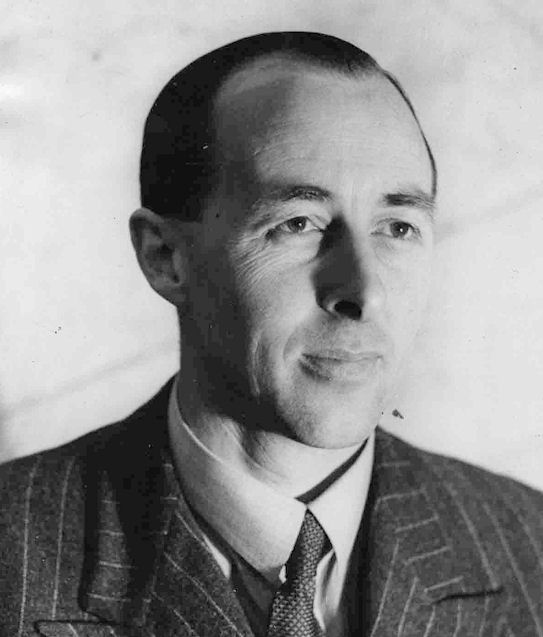


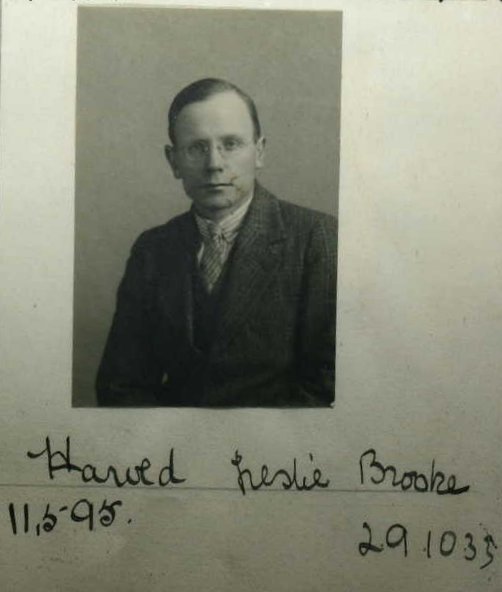
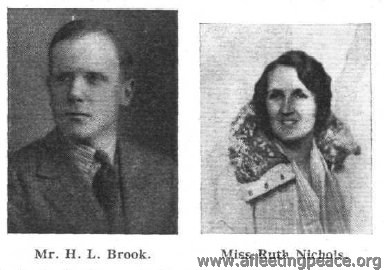



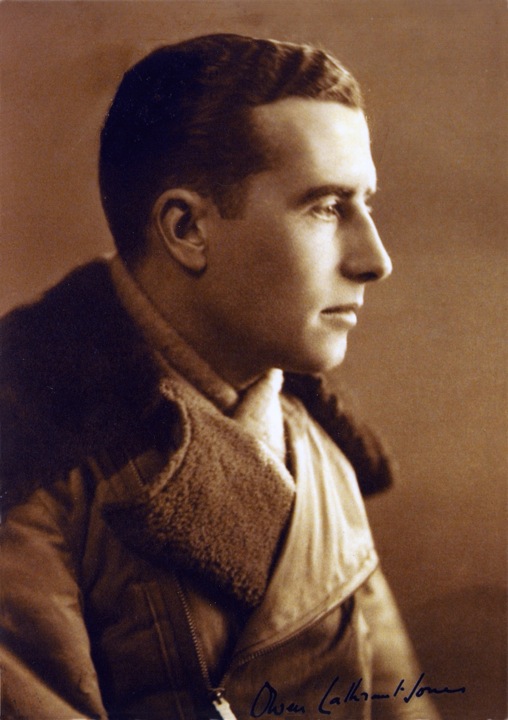
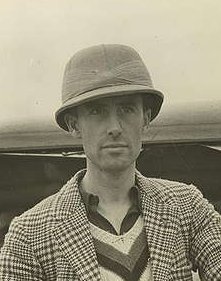 1934
1934 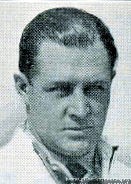
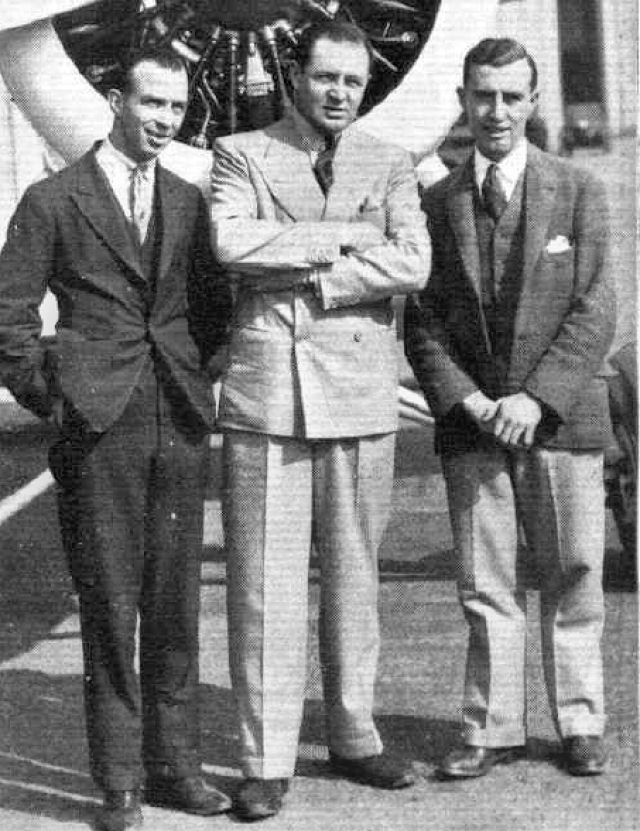





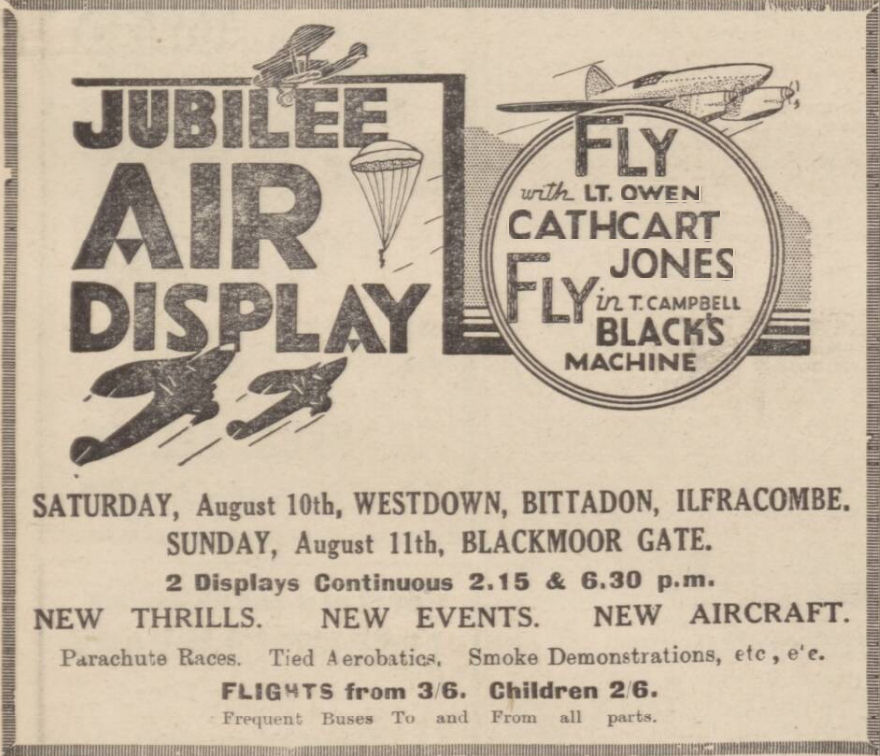
 via Joss Mullinger
via Joss Mullinger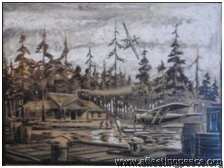

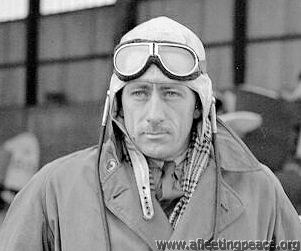

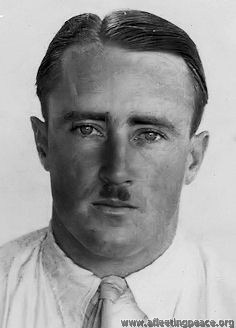
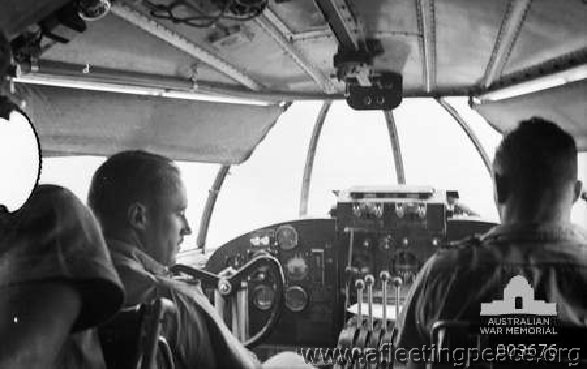


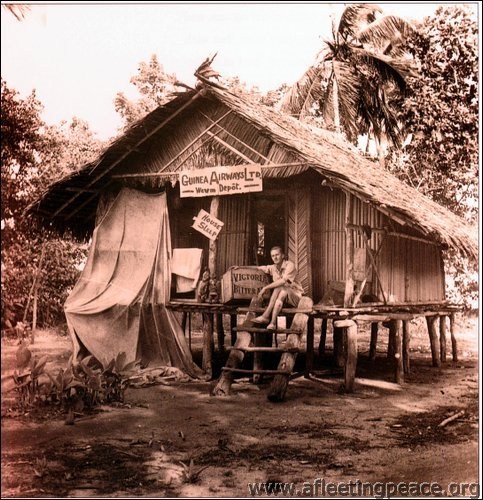
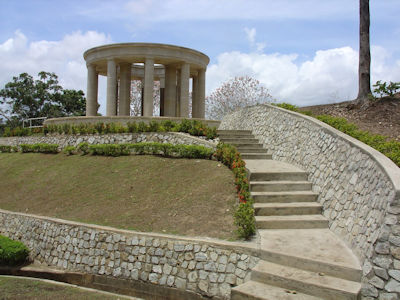 CWGC
CWGC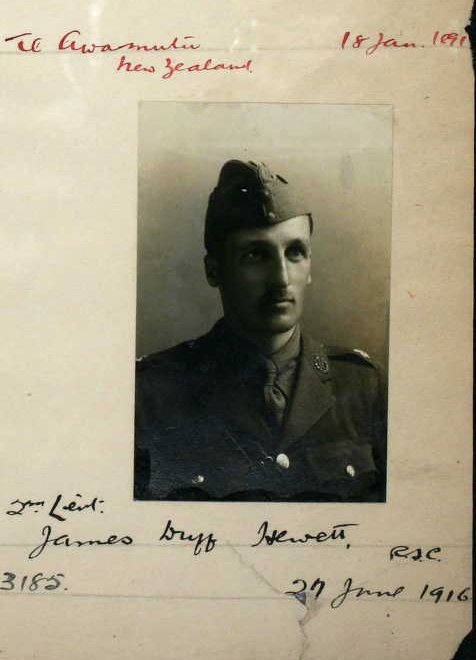 1916
1916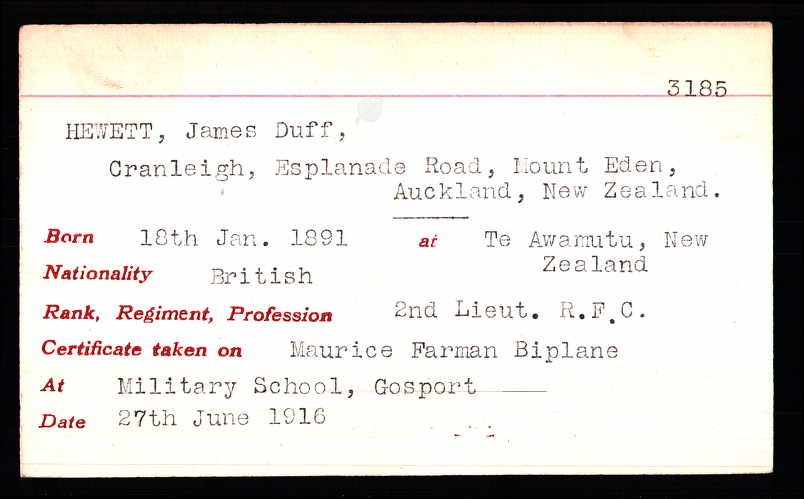

 1917, when a 2nd Lieut in the RFC, aged 20
1917, when a 2nd Lieut in the RFC, aged 20 1928, aged 31
1928, aged 31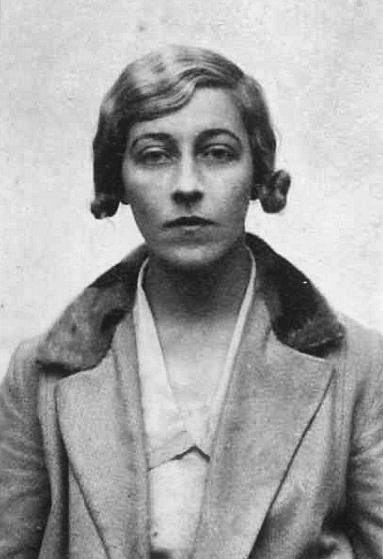 1929
1929
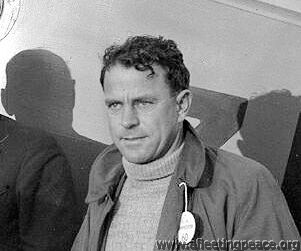
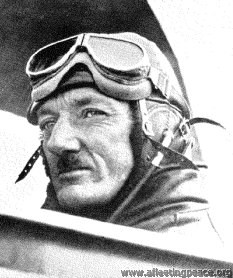


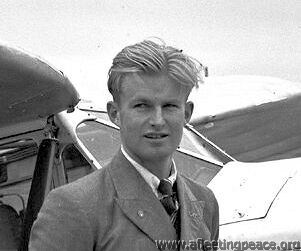

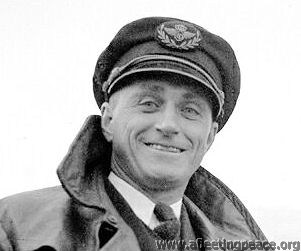
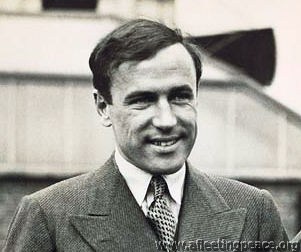
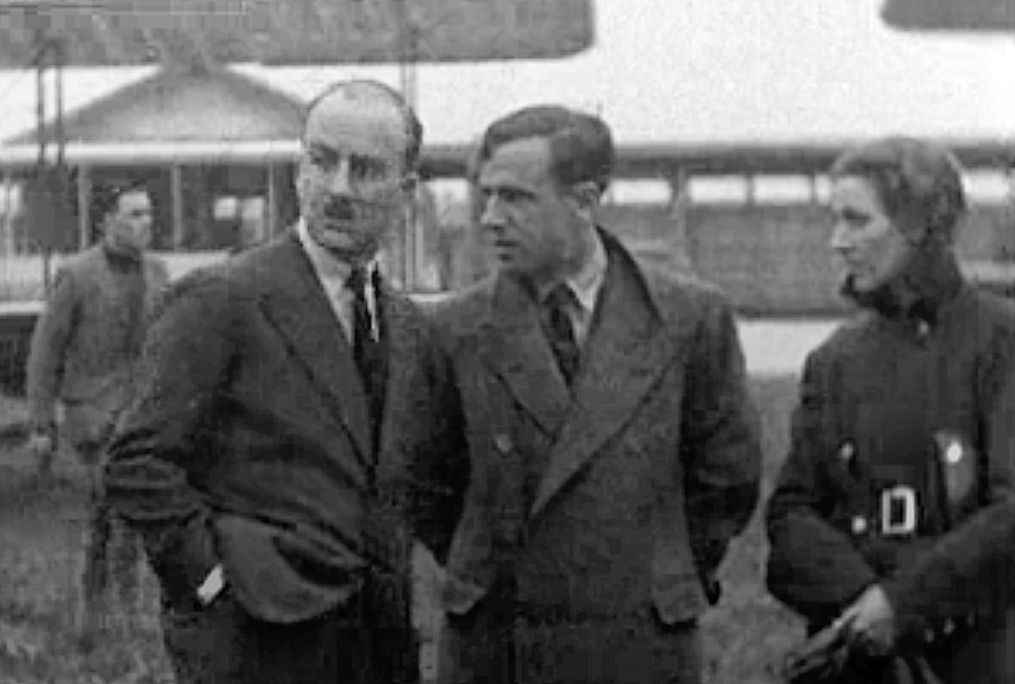
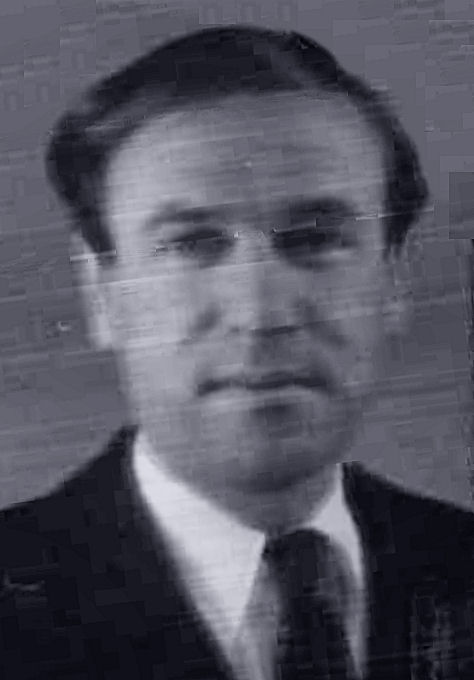 RAeC 1939
RAeC 1939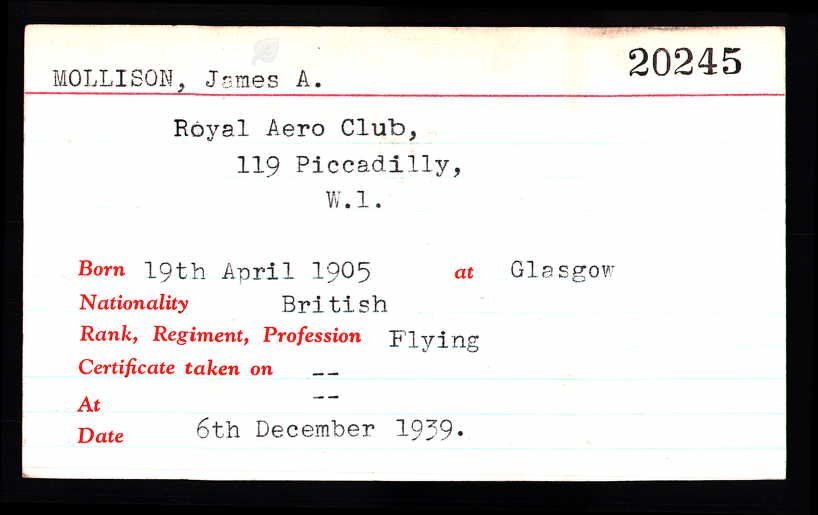
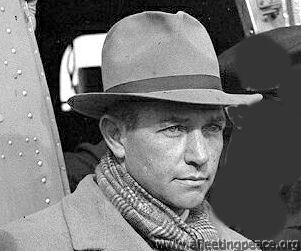




 with his father Charles
with his father Charles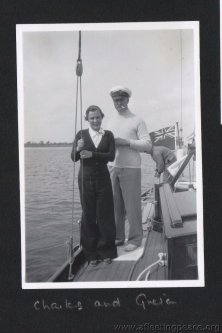

.jpg)

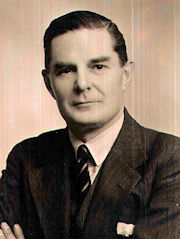 1947
1947
 Avro Avian
Avro Avian
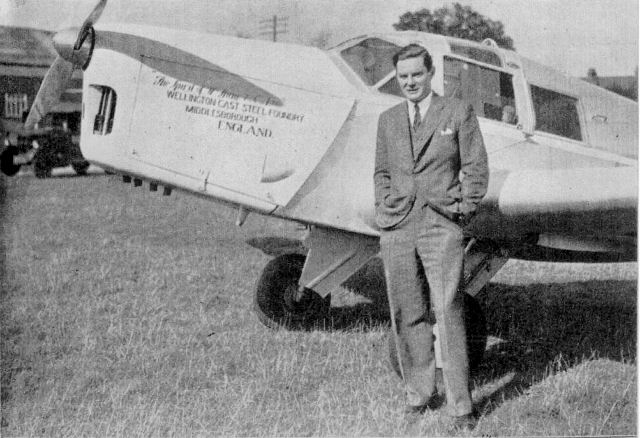 Geoffrey with the Eagle, via Louise Wilkinson
Geoffrey with the Eagle, via Louise Wilkinson
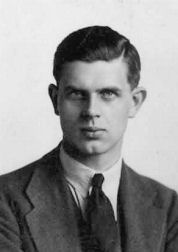 Geoffrey Hill Ambler (q.v.)
Geoffrey Hill Ambler (q.v.)

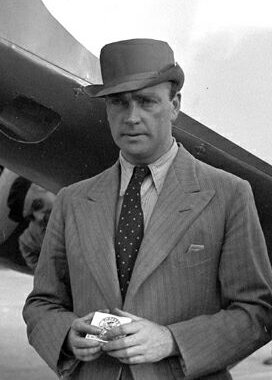 1934, aged 38
1934, aged 38
 1934
1934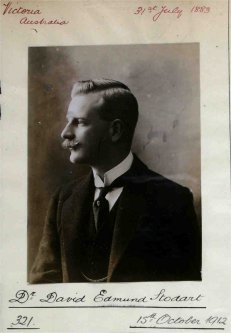 1912
1912
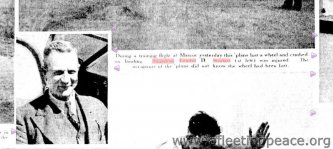
![MacRobertson Race 1934 K4047 Airspeed Courier (David Stodart) [0822-0032]](/images/gallery/air%20races/MacRobertson/preview/333s333/MacRobertson%20Race%201934%20K4047%20Airspeed%20Courier%20%28David%20Stodart%29%20%5B0822-0032%5D.jpg)

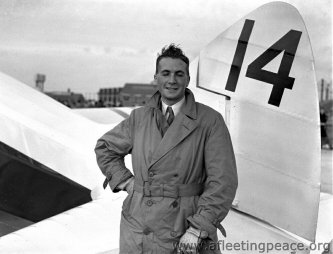
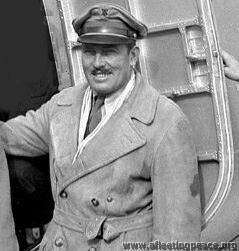


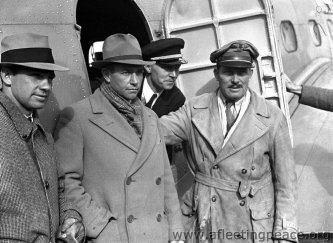 with Clyde Pangborn before the 1934 MacRobertson Race
with Clyde Pangborn before the 1934 MacRobertson Race
![MacRobertson Race 1934 Sydney Turner [0823-0004]](/images/gallery/air%20races/MacRobertson/preview/333s333/MacRobertson%20Race%201934%20Sydney%20Turner%20%5B0823-0004%5D.jpg)
 MacArthur, Stack and Turner befoe the race
MacArthur, Stack and Turner befoe the race
 1930, aged 22
1930, aged 22